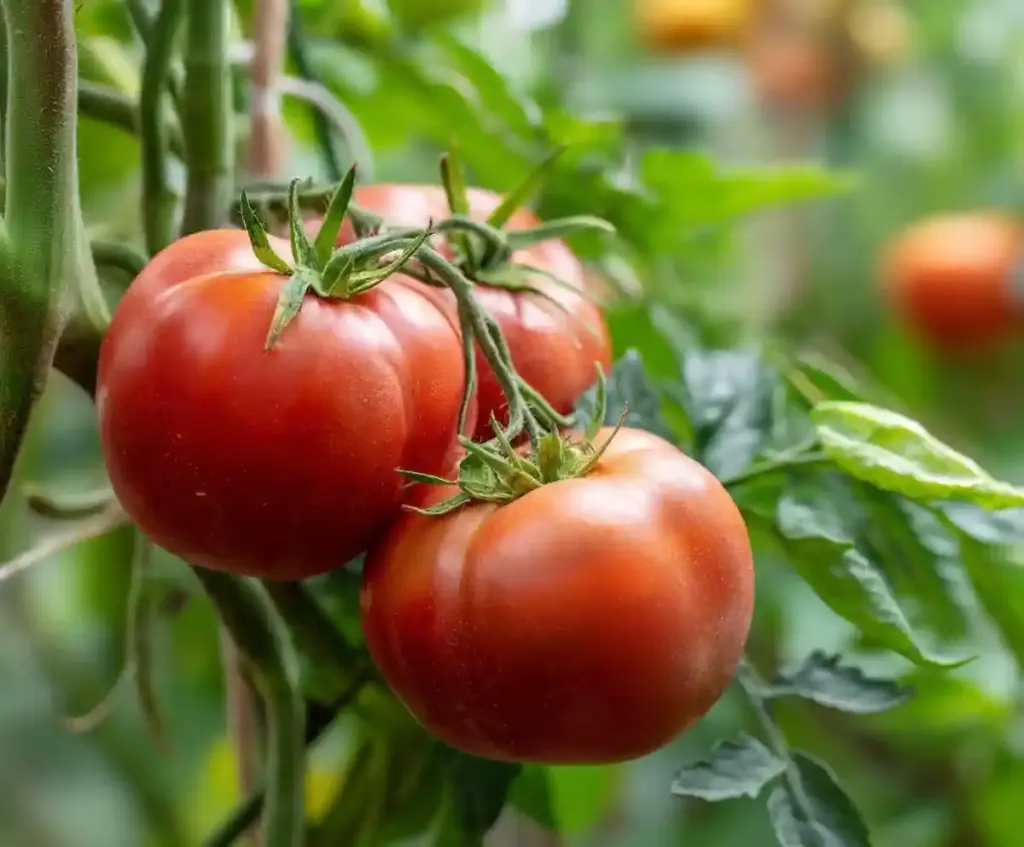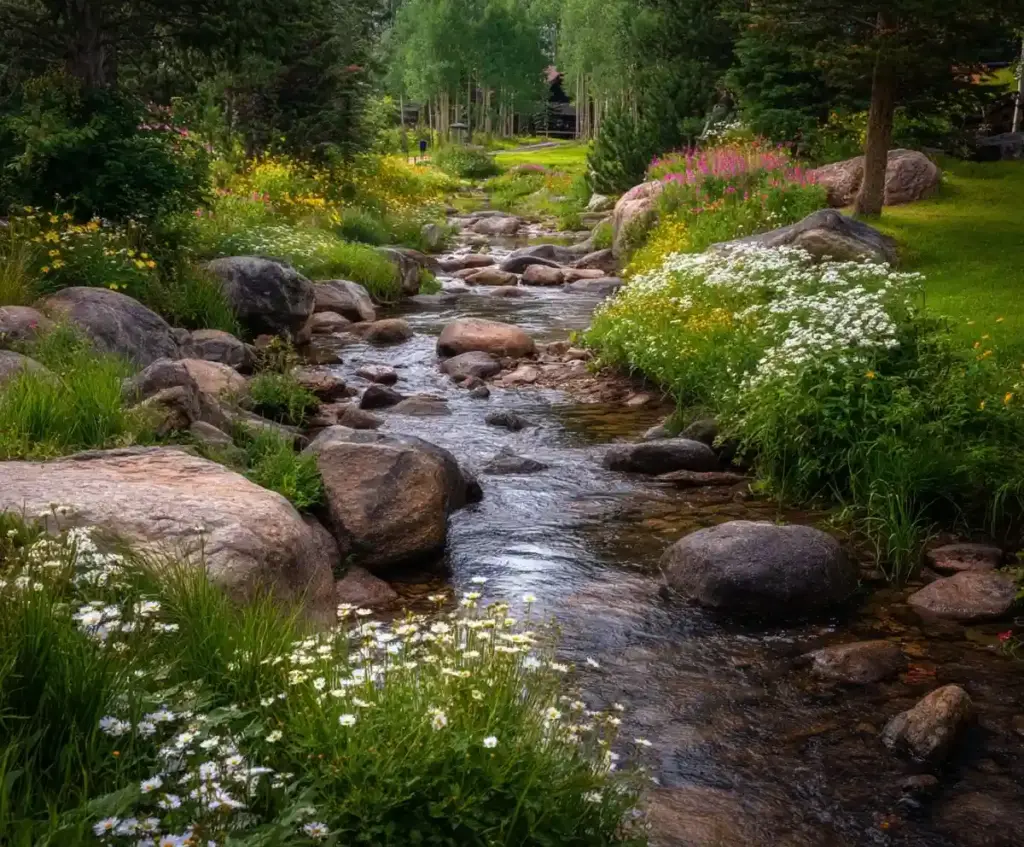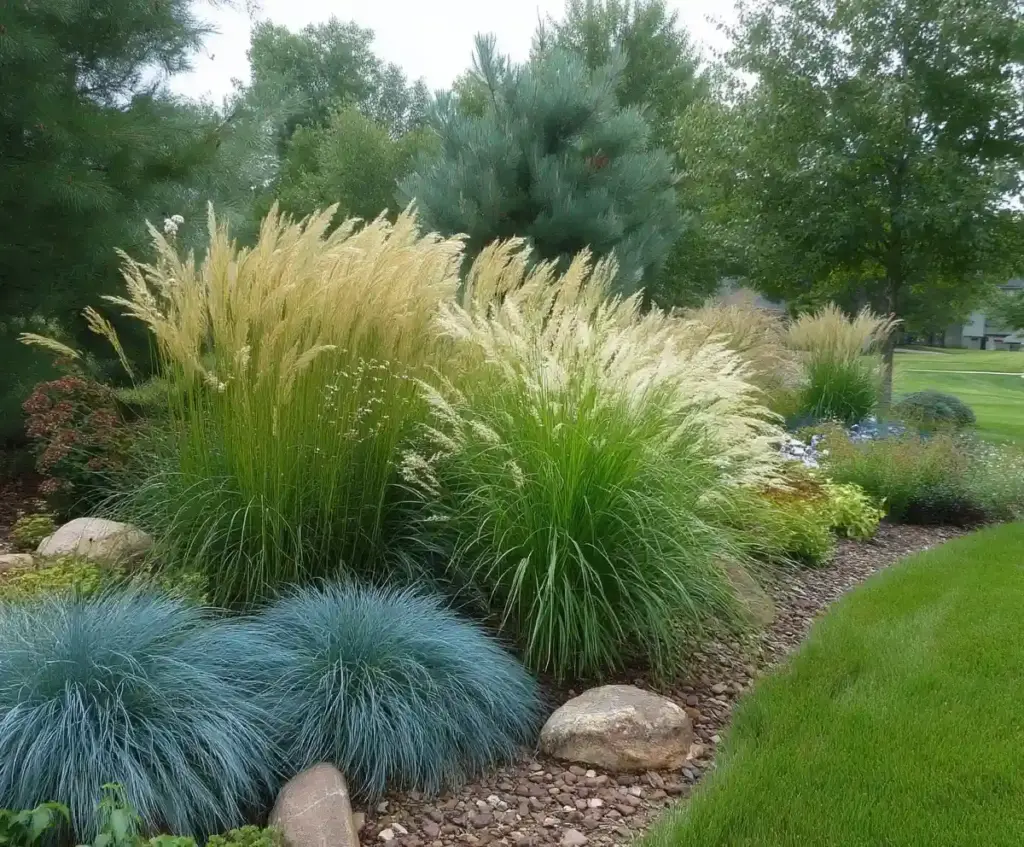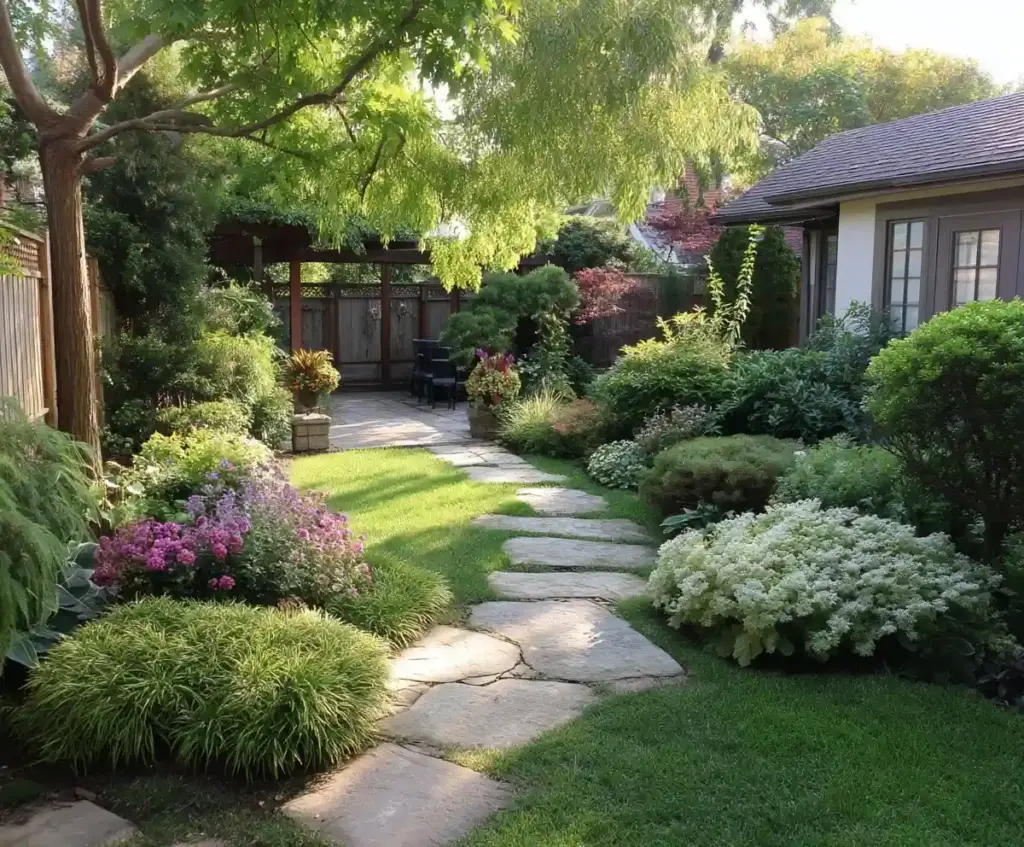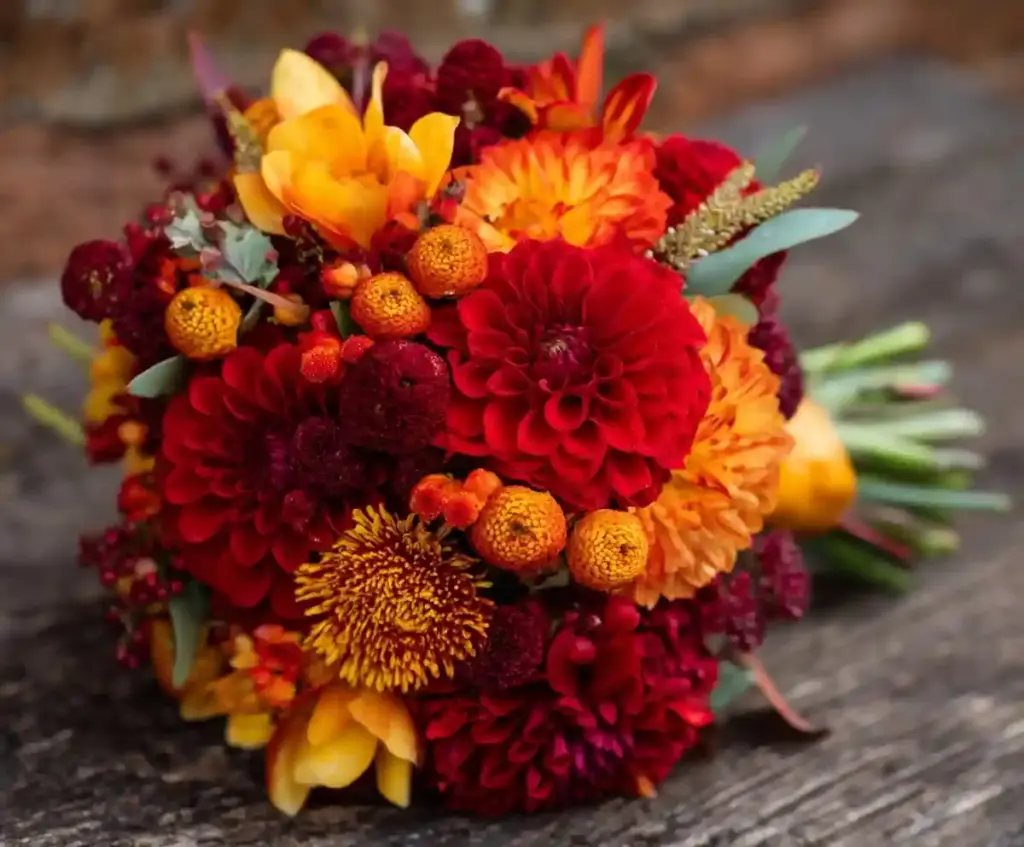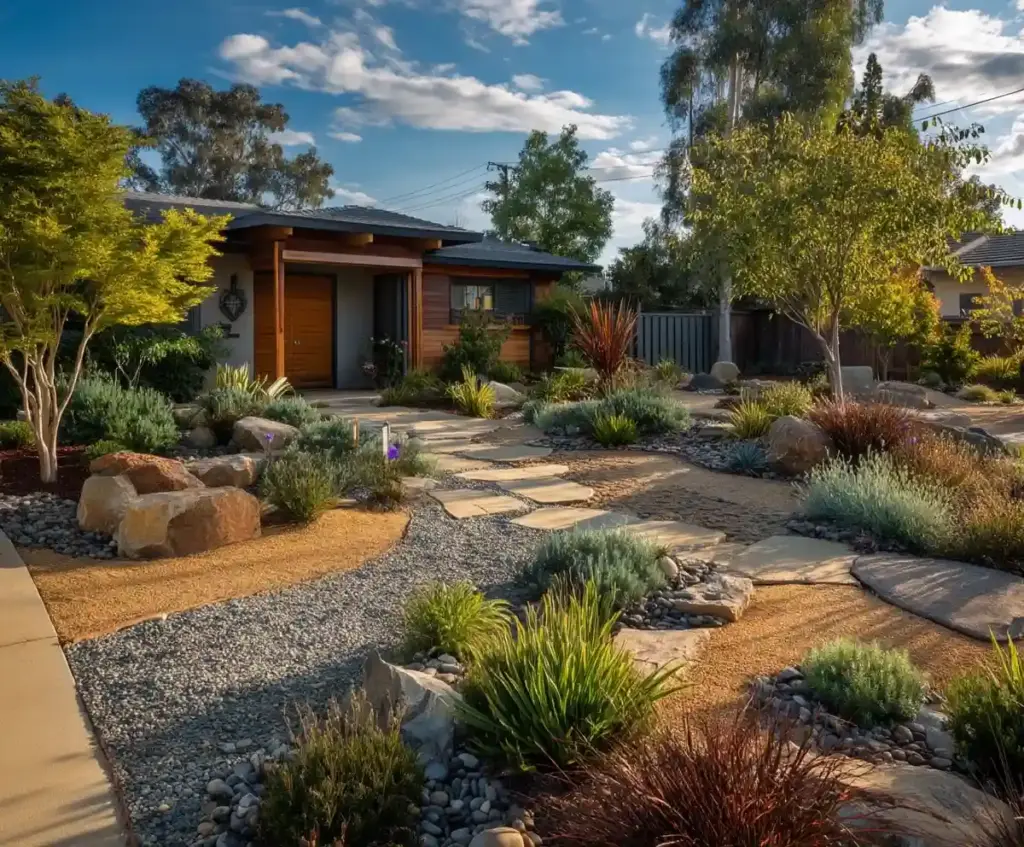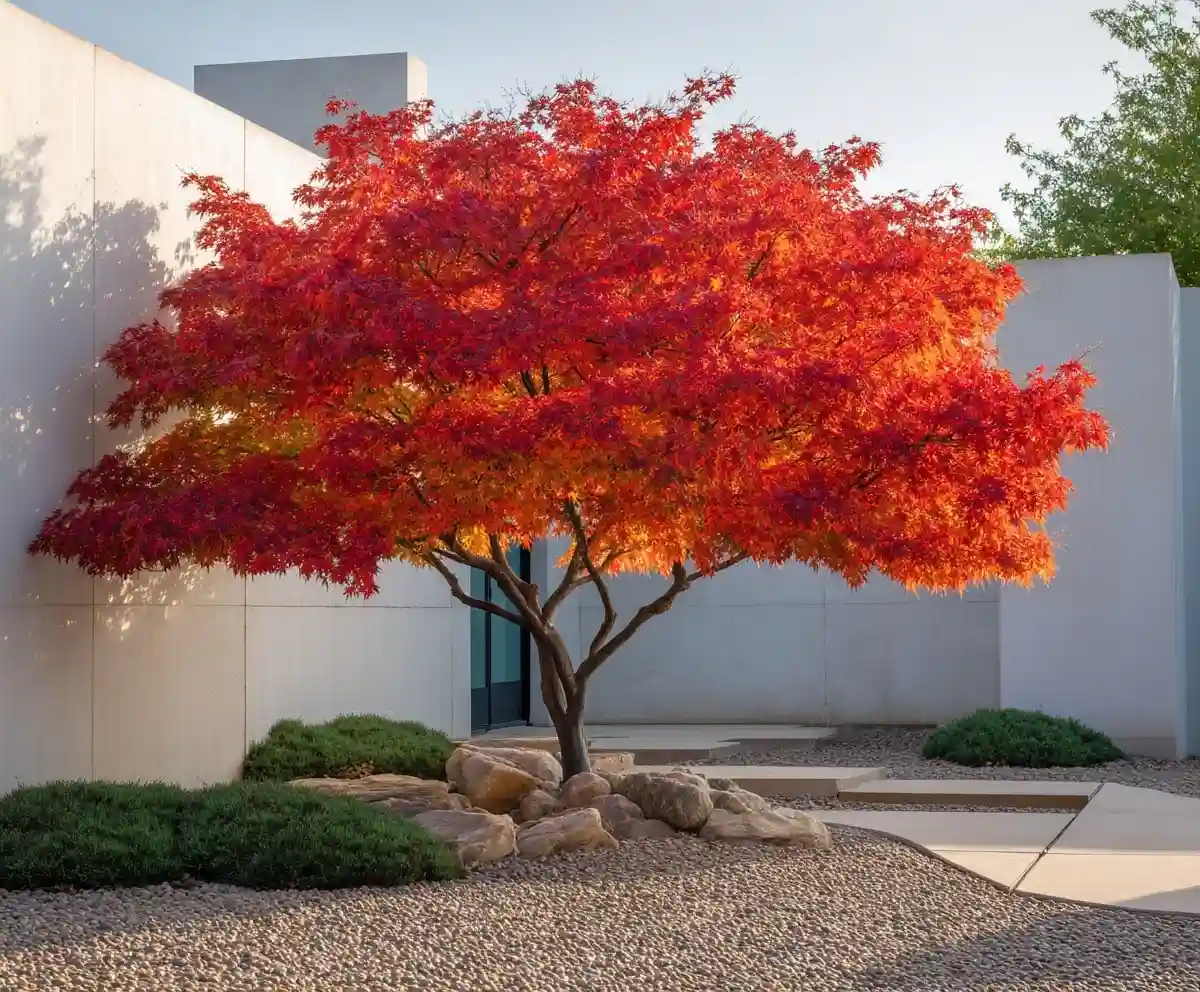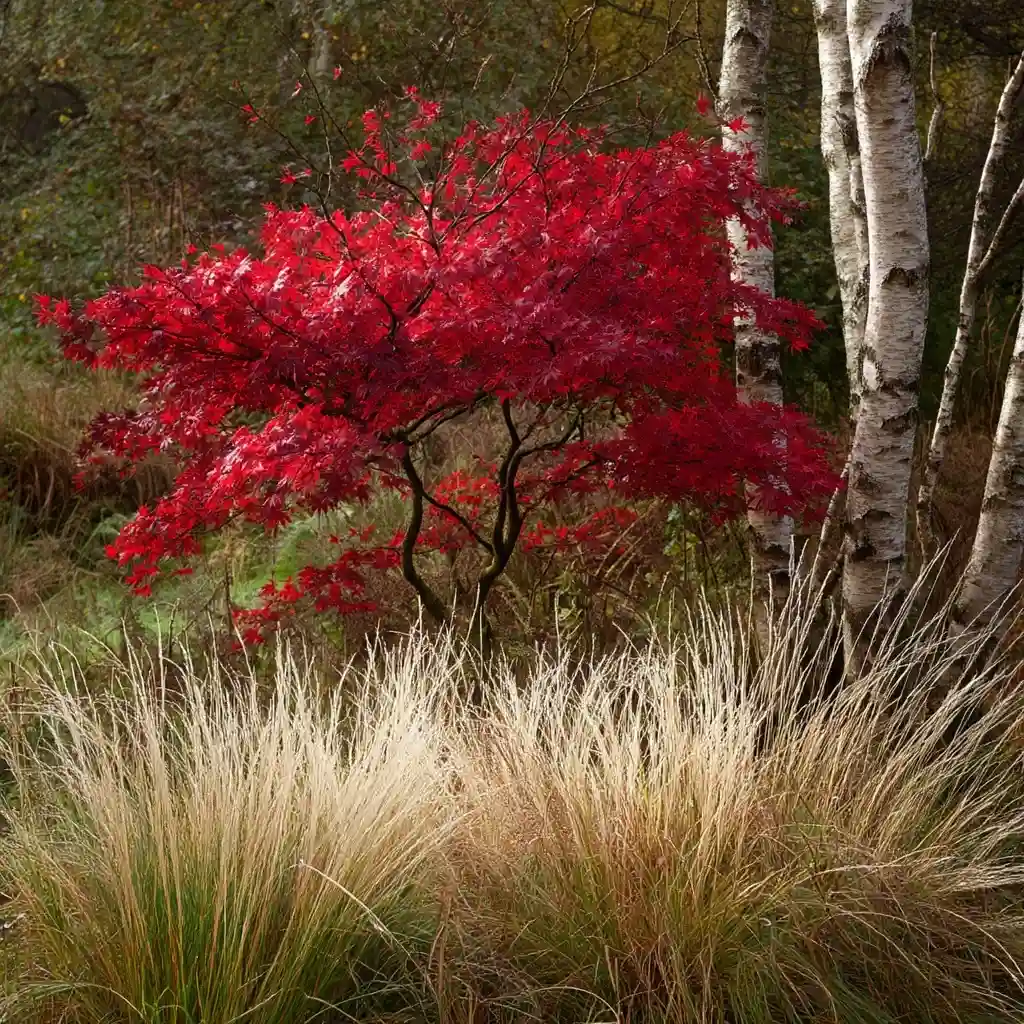Autumn trees for landscaping bring a burst of color and texture that transforms any outdoor space into a seasonal masterpiece. As the air cools and days shorten, these trees paint the yard with shades of gold, crimson, and amber. Beyond their beauty, they provide long-term benefits—offering shade, shelter for wildlife, and structure to your garden design. Choosing the right varieties means your landscape can glow with vibrant foliage year after year. Whether you want a single statement tree or a mix for layered color, the right autumn choices can turn your garden into a warm, welcoming haven throughout the season.
Table of Contents
1. Add Extra Movement with Grass
Pairing autumn trees for landscaping with ornamental grasses creates a scene that feels alive, even on still days. Japanese forest grass (Hakonechloa macra), with its graceful, arching blades, sways gently in the breeze and adds a soft texture beneath fall foliage. Plant it under the fiery canopy of a red-leaf Japanese maple or beside the golden shimmer of a silver birch. The contrast between the tree’s vibrant leaves and the grass’s flowing form makes the whole area feel dynamic. This combination not only boosts seasonal color but also brings year-round interest, as the grass retains structure long after the leaves have fallen.
2. Impress with a Japanese Maple
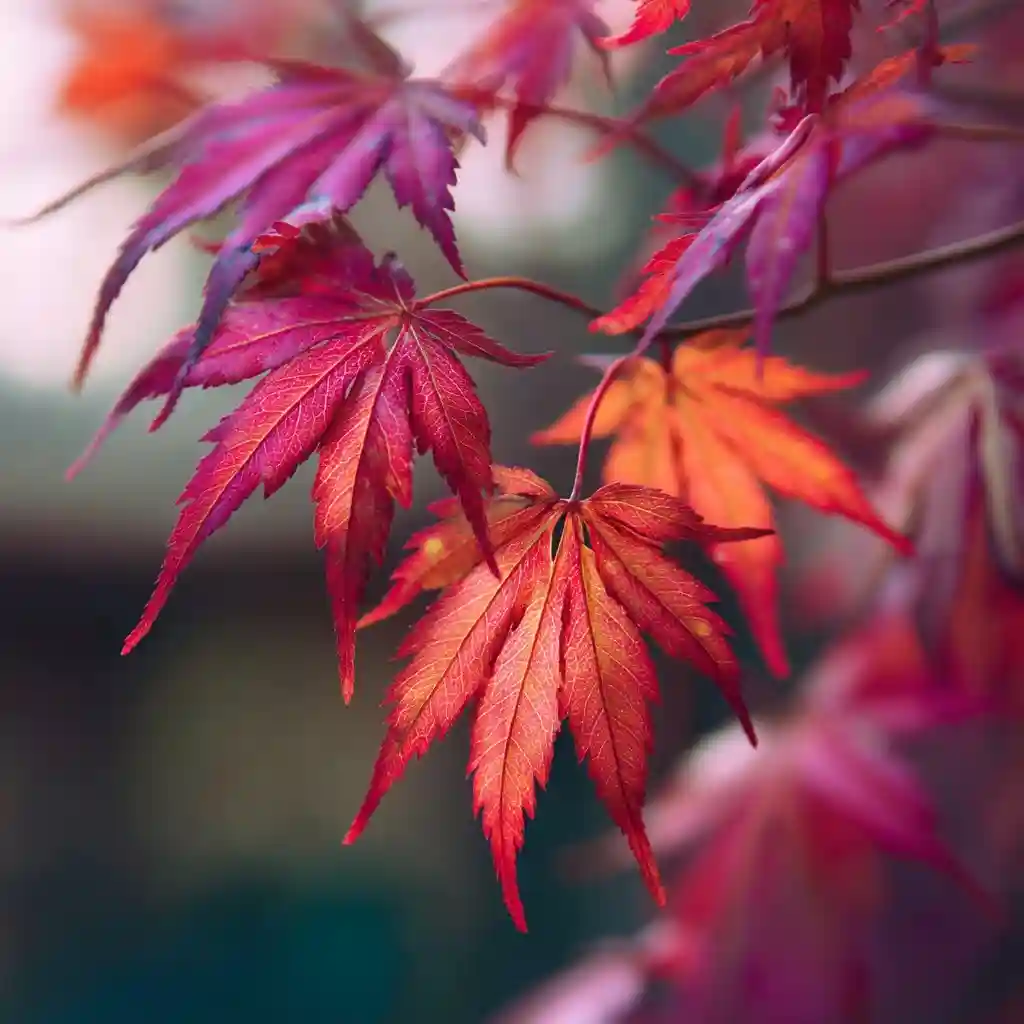
Few autumn trees for landscaping can match the elegance of the Japanese maple (Acer palmatum). Known for its finely cut leaves and graceful branching, this tree offers a spectacular range of colors—from deep burgundy to fiery red and golden orange. In autumn, its foliage glows like stained glass when backlit by the sun. Japanese maples thrive as focal points in garden beds, near patios, or in front yards where they can be admired up close. They pair beautifully with low-growing evergreens or decorative stones, allowing their sculptural form to stand out. With proper care, they’ll reward you with decades of seasonal beauty.
3. Warm Up the Yard with a European Beech Tree
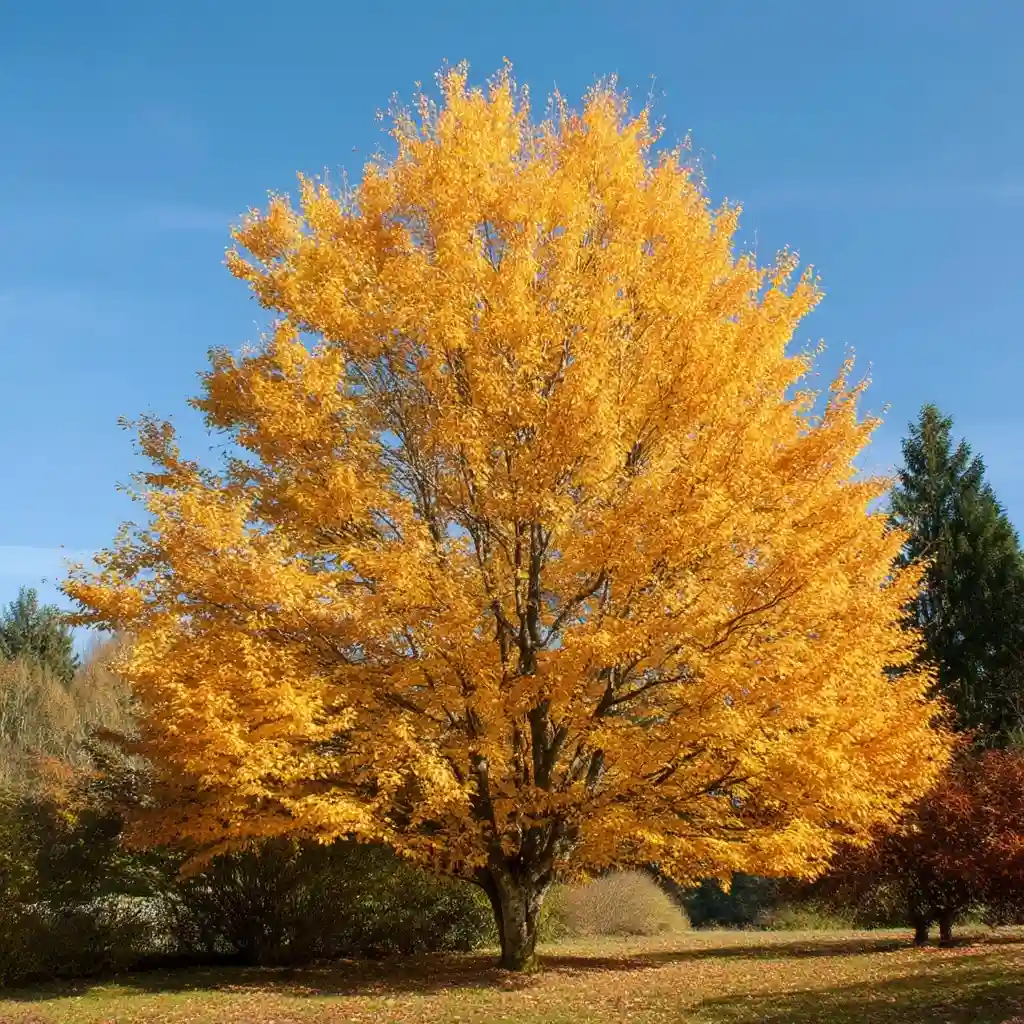
The European beech (Fagus sylvatica) is a timeless choice among autumn trees for landscaping, thanks to its rich golden-yellow foliage and stately presence. In fall, its leaves create a warm, glowing canopy that can last well into the season, adding weeks of color to your yard. Beyond its beauty, the tree features smooth, silvery-gray bark that provides winter interest after the leaves drop. Certain varieties even produce small, edible nuts that attract birds and squirrels. Reaching heights between 20 and 80 feet, the European beech works beautifully as a specimen tree or in larger landscapes where its grand form can be fully appreciated.
4. Charm with a Persian Ironwood Tree
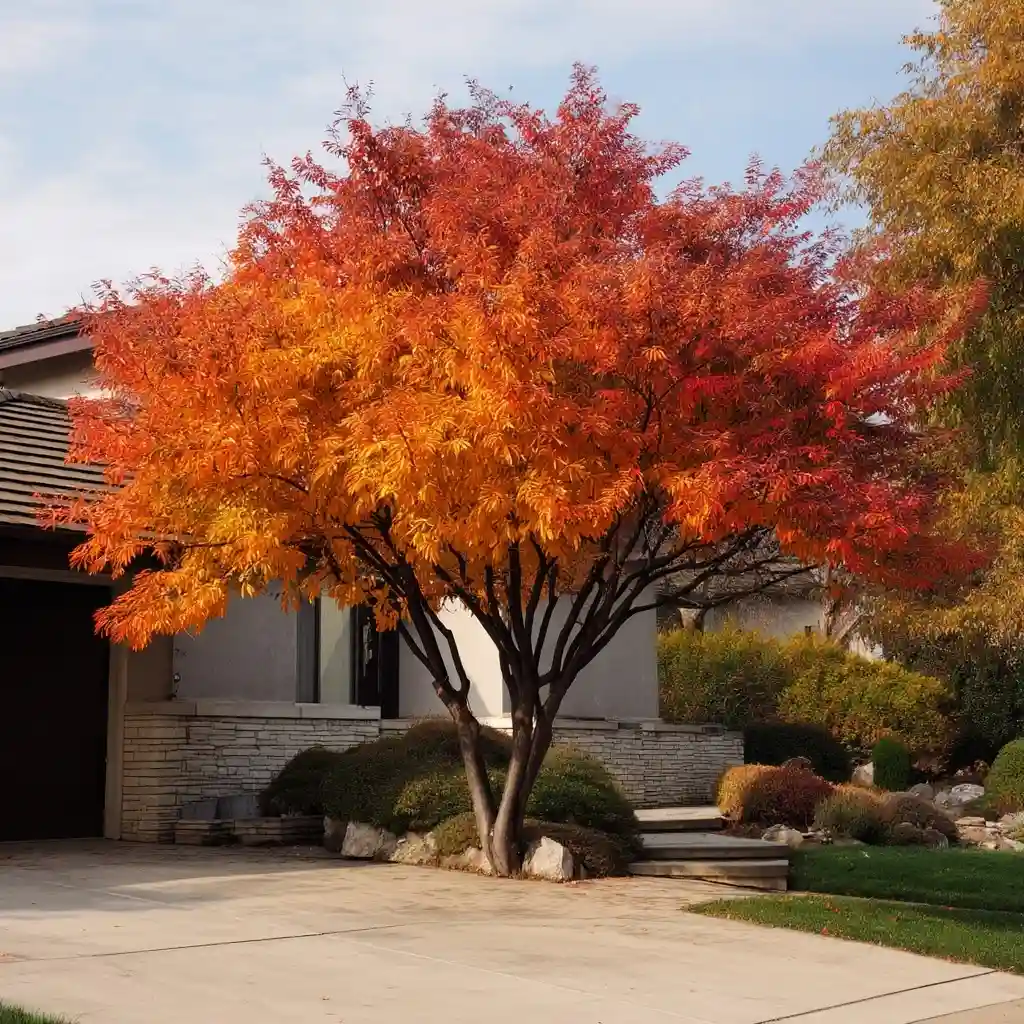
The Persian ironwood (Parrotia persica) is a true gem among autumn trees for landscaping, offering year-round visual appeal. In fall, its leaves shift through a mesmerizing palette of red, orange, and gold, often displaying multiple colors on the same branch. Come winter, its smooth, mottled bark peels to reveal patches of gray, green, and cream, adding interest even in the dormant season. In spring, small yet eye-catching crimson flowers emerge before the foliage, giving it another burst of seasonal charm. Compact enough for modest yards but striking enough for larger gardens, this tree works well as a feature planting in mixed borders or near patios.
5. Make a Statement
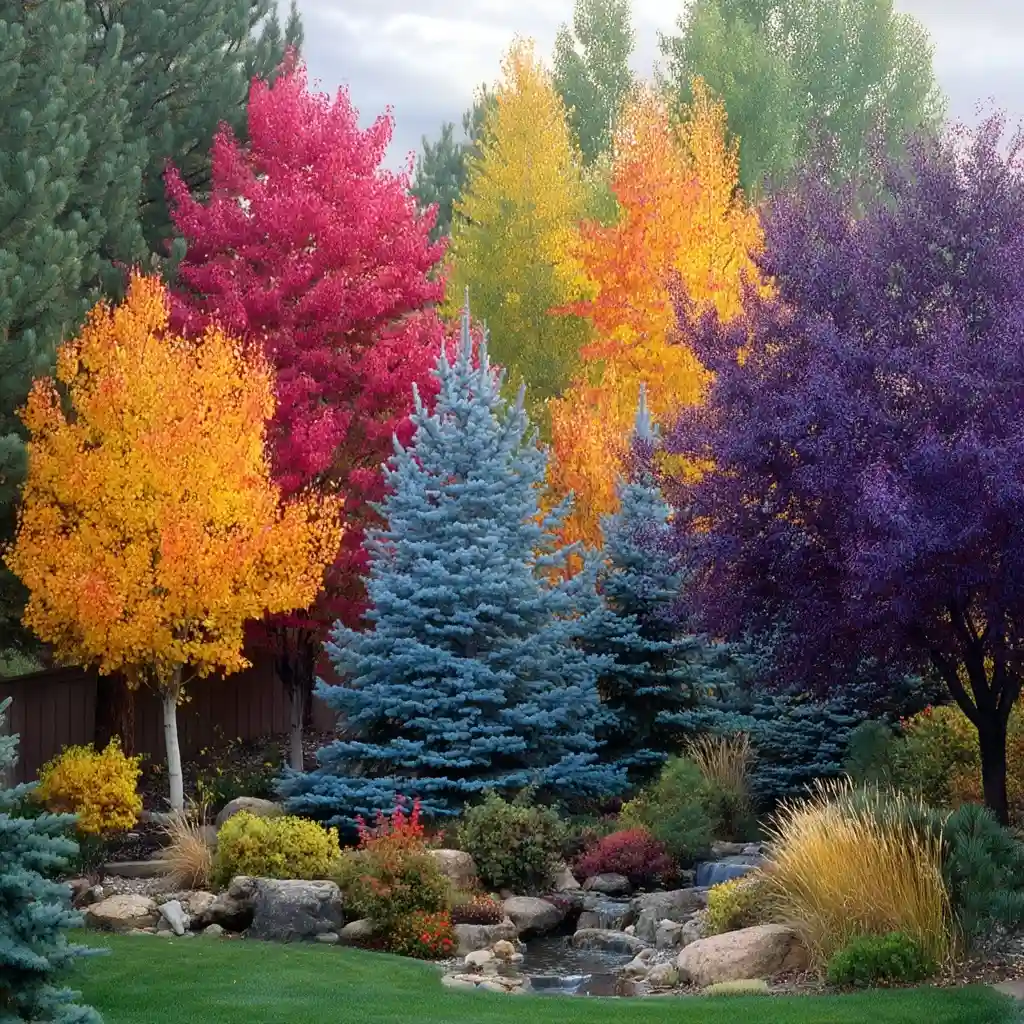
Sometimes, one standout tree isn’t enough—layering multiple autumn trees for landscaping can turn your yard into a vivid seasonal showcase. Combining varieties like sugar maple, Colorado blue spruce, and purple-leaf plum creates a rich tapestry of colors ranging from bright orange to deep burgundy and even silvery blue. Adding evergreens such as cedars or junipers in the background provides a consistent green frame, making the autumn hues pop even more. This approach works best in larger spaces where each tree has room to grow and display its full seasonal character, turning your landscape into a living work of art.
6. Provide Some Shade
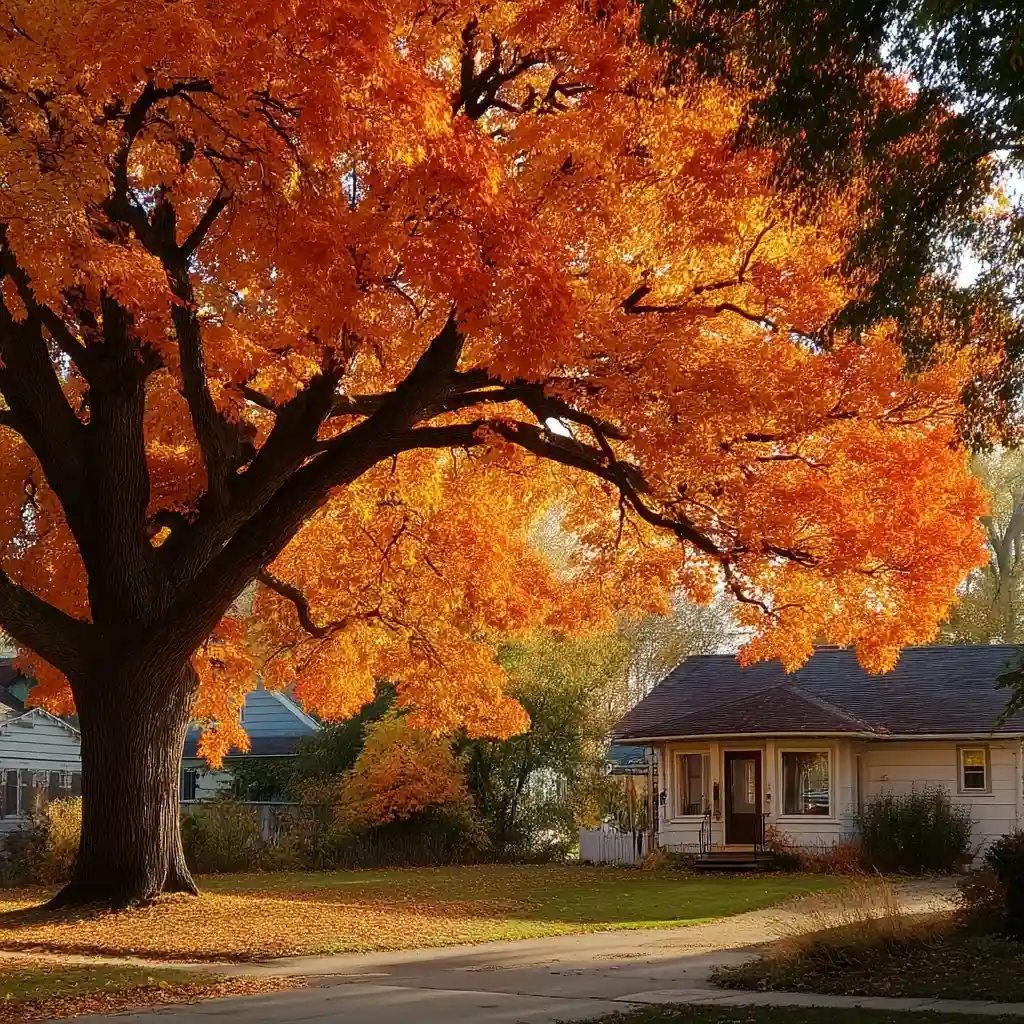
Choosing autumn trees for landscaping that also deliver shade means you enjoy beauty and comfort in equal measure. Oaks are a classic example—they’re hardy, adaptable, and capable of thriving even in urban environments. In fall, their leaves turn shades of russet, bronze, or deep red, creating a warm canopy overhead. Beneath their broad branches, you can plant smaller fall beauties like sugar maples for a layered effect. This combination not only cools your outdoor spaces during summer but also ensures your yard bursts with autumn color from top to bottom, making it both practical and visually rewarding.
7. Contrast with Your Trees
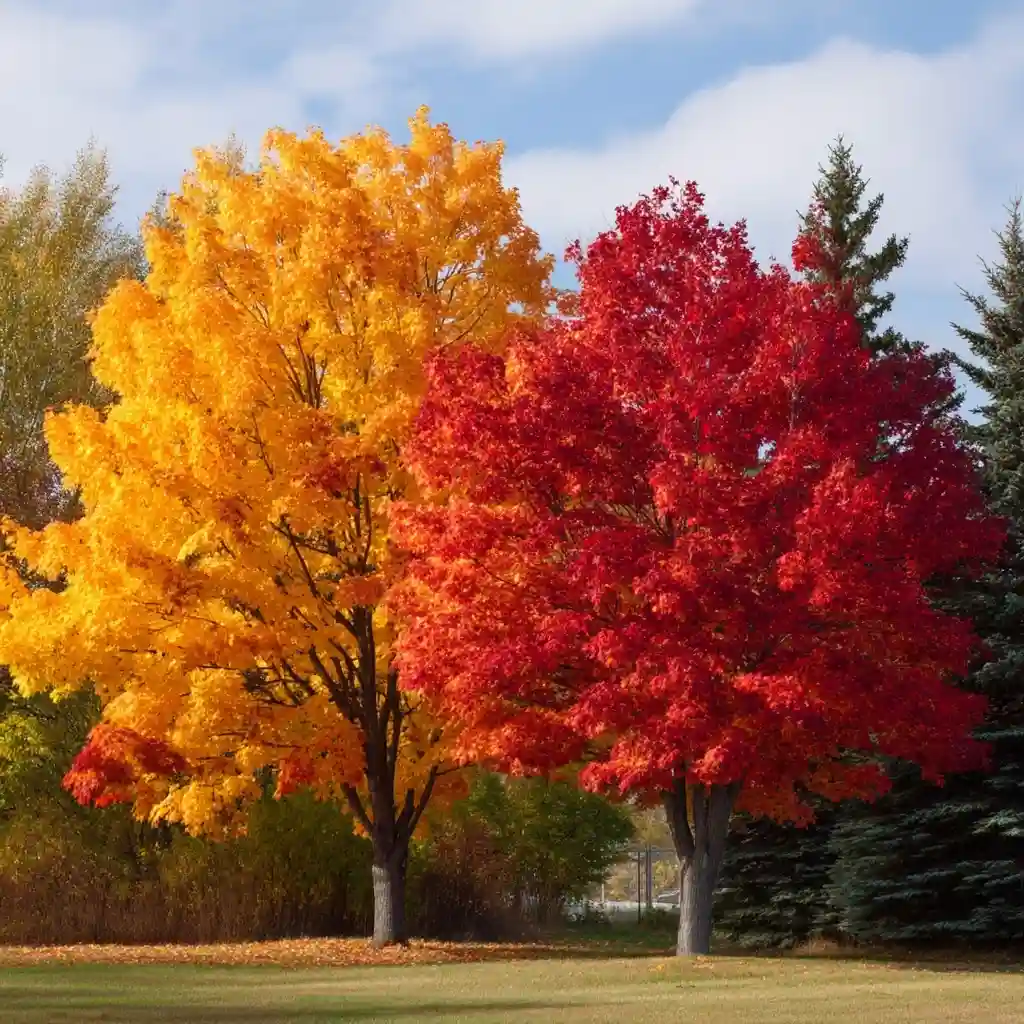
Creating contrast is one of the most effective ways to showcase autumn trees for landscaping. Pairing varieties with different leaf colors—such as a sugar maple’s golden tones alongside a red maple’s fiery hues—creates an instant focal point. Even within the same species, trees can display unique shades each year, adding an element of surprise to your garden. To maximize the effect, position contrasting trees where they can be viewed together, like framing a walkway or bordering a patio. This visual interplay of warm and cool tones adds depth and dimension, making your fall landscape feel vibrant and dynamic.
8. Bring a Grand Feel with a Sugar Maple Tree
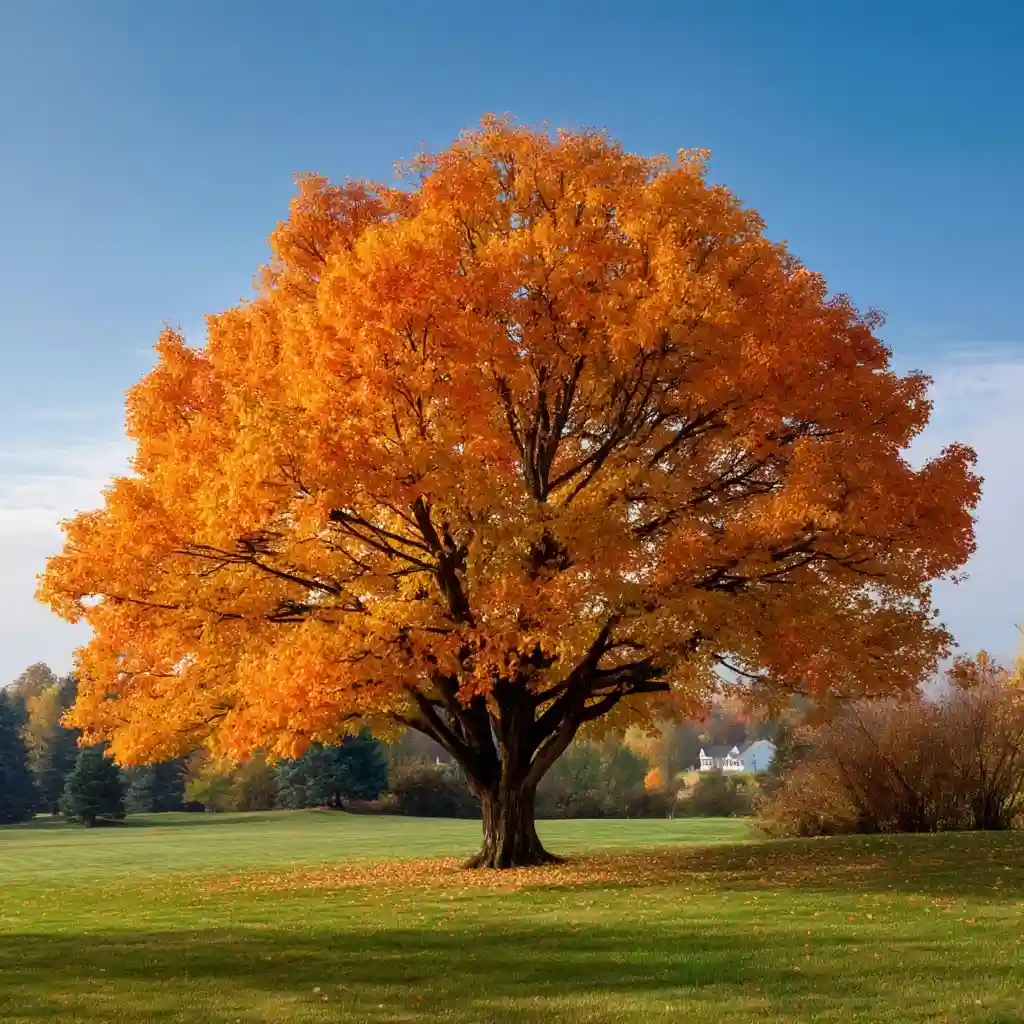
The sugar maple (Acer saccharum) is one of the most iconic autumn trees for landscaping, renowned for its reliable bursts of yellow, orange, and red. Its large, dense canopy brings a majestic presence to any yard, making it ideal as a central focal point in spacious landscapes. Beyond its visual appeal, the sugar maple offers a sweet bonus—its sap can be tapped and transformed into maple syrup. With a growth rate of over three feet per year under the right conditions, it quickly matures into a shade-providing giant that delivers both beauty and utility season after season.
9. Keep it Simple
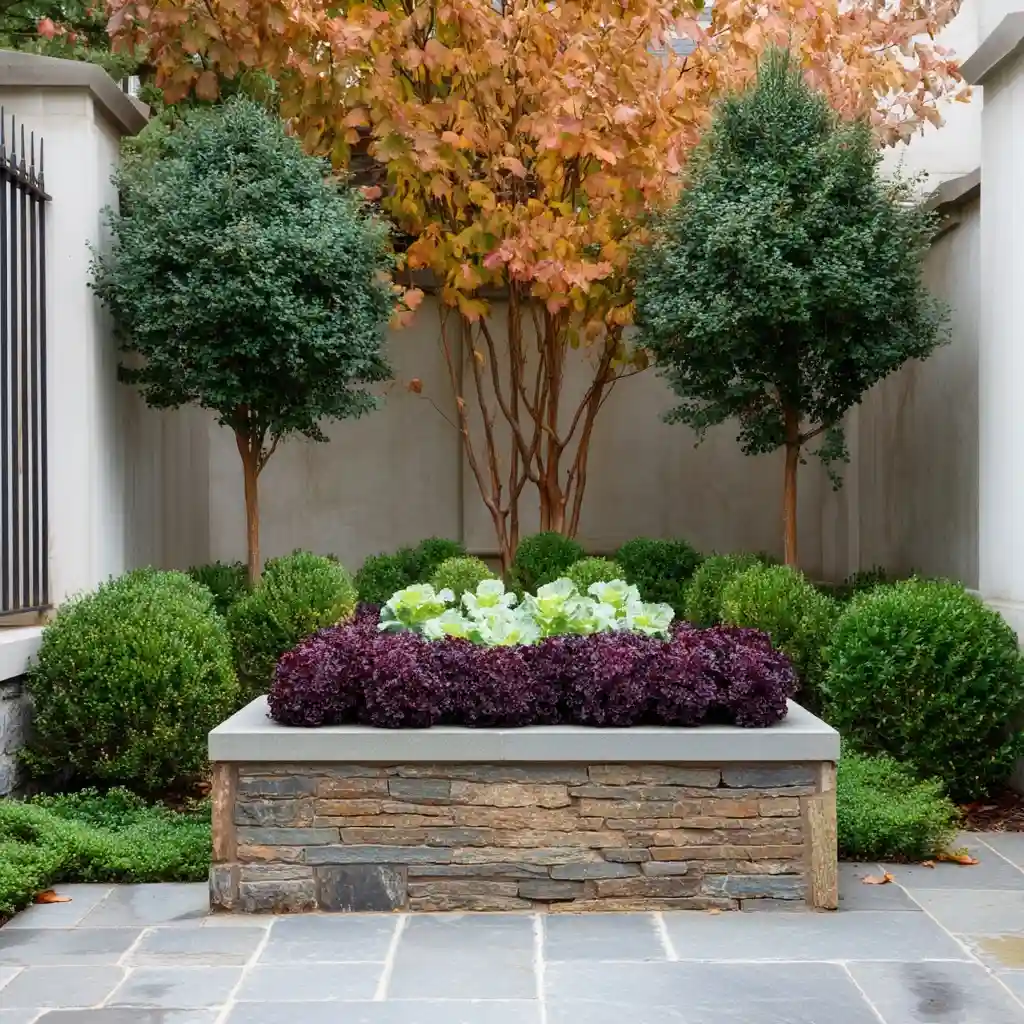
Sometimes the most striking autumn trees for landscaping are those allowed to shine without competing elements. A few well-placed maples against a clean backdrop—like a row of neatly trimmed boxwood shrubs—create a balanced and elegant look. This minimalist approach highlights the vivid foliage without overwhelming the eye. Adding seasonal accents, such as ornamental kale or pansies in decorative pots, can enhance the display while keeping the focus on the trees. By limiting the number of plant varieties, each tree’s color and form stand out, resulting in a landscape that feels organized, intentional, and effortlessly beautiful.
10. Match with the Architecture
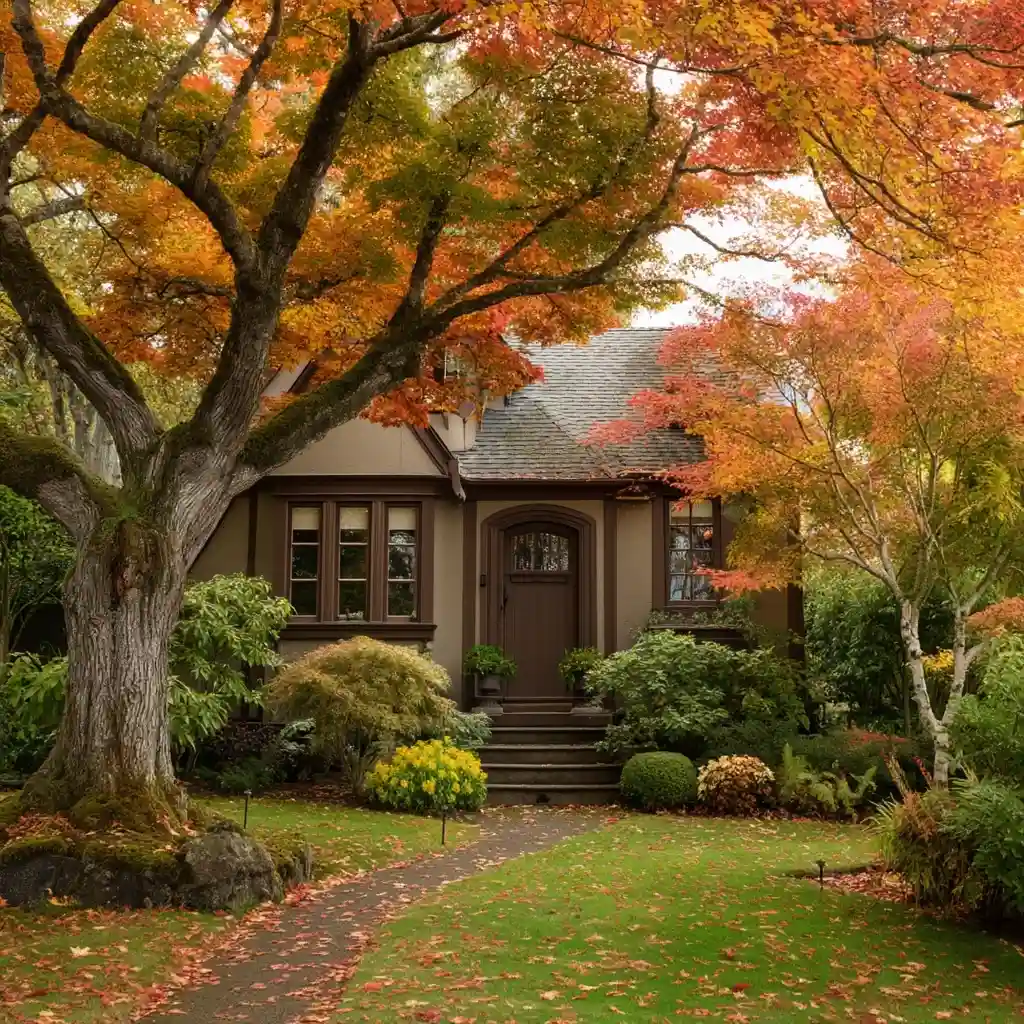
Integrating autumn trees for landscaping with the style and color scheme of your home creates a harmonious, polished look. For example, a Japanese maple’s deep red foliage can complement warm-toned shutters or brickwork, while a sugar maple’s golden leaves pair beautifully with natural wood or stone finishes. When trees echo the architecture, the entire property feels more cohesive and thoughtfully designed. Be sure to give each tree enough space for its roots and canopy to expand without crowding structures. This thoughtful placement ensures the trees enhance curb appeal while maintaining a healthy, long-lasting presence.
11. Brighten Up the Facade
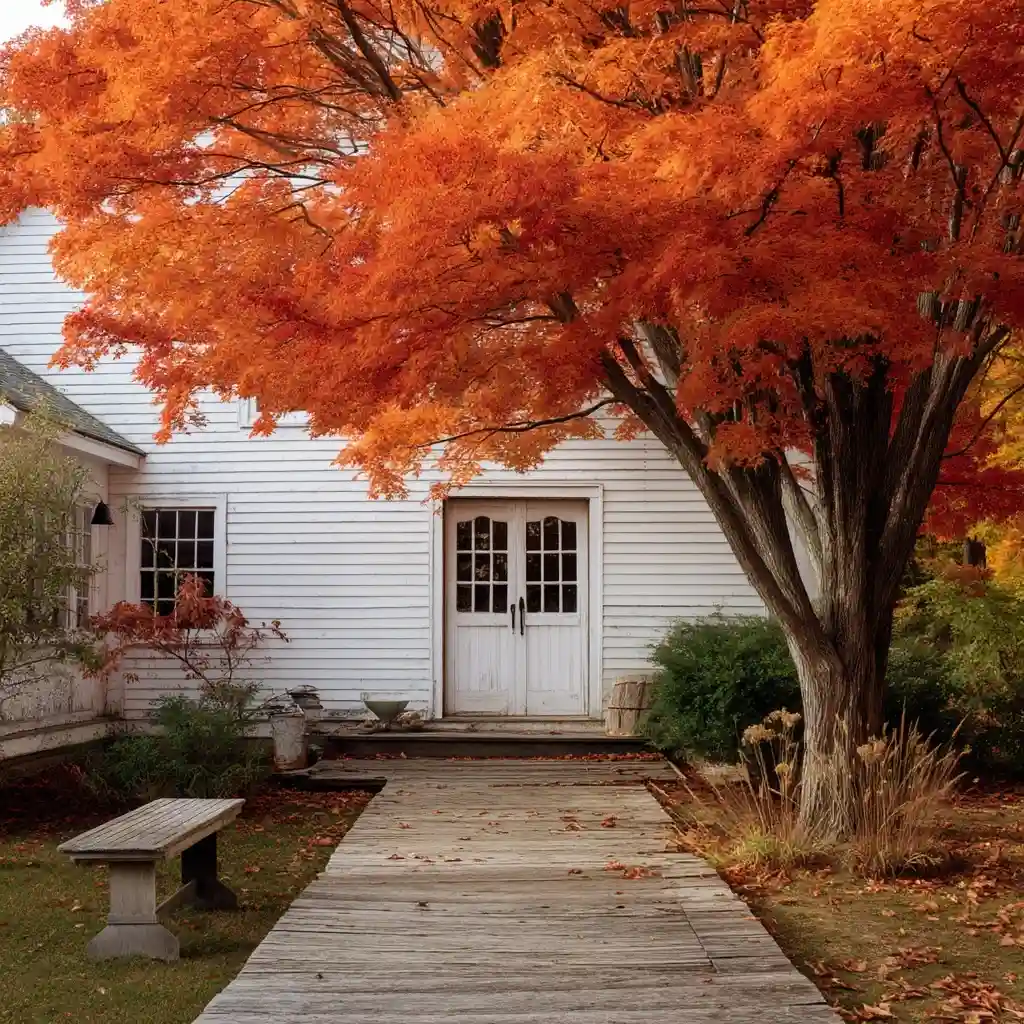
Using autumn trees for landscaping to highlight your home’s exterior is an easy way to boost seasonal charm. A Japanese maple, which shifts from summer green to vivid red-orange in fall, can stand out beautifully against a light-colored facade. Its bold hues not only frame the house but also draw attention to architectural details like porches or trim. For the best effect, plant it where the sun can illuminate the leaves in the afternoon, creating a warm, inviting glow. This approach works especially well for homes with neutral exteriors, giving them a lively burst of autumn personality.
12. Uplift Your Backyard Fireplace
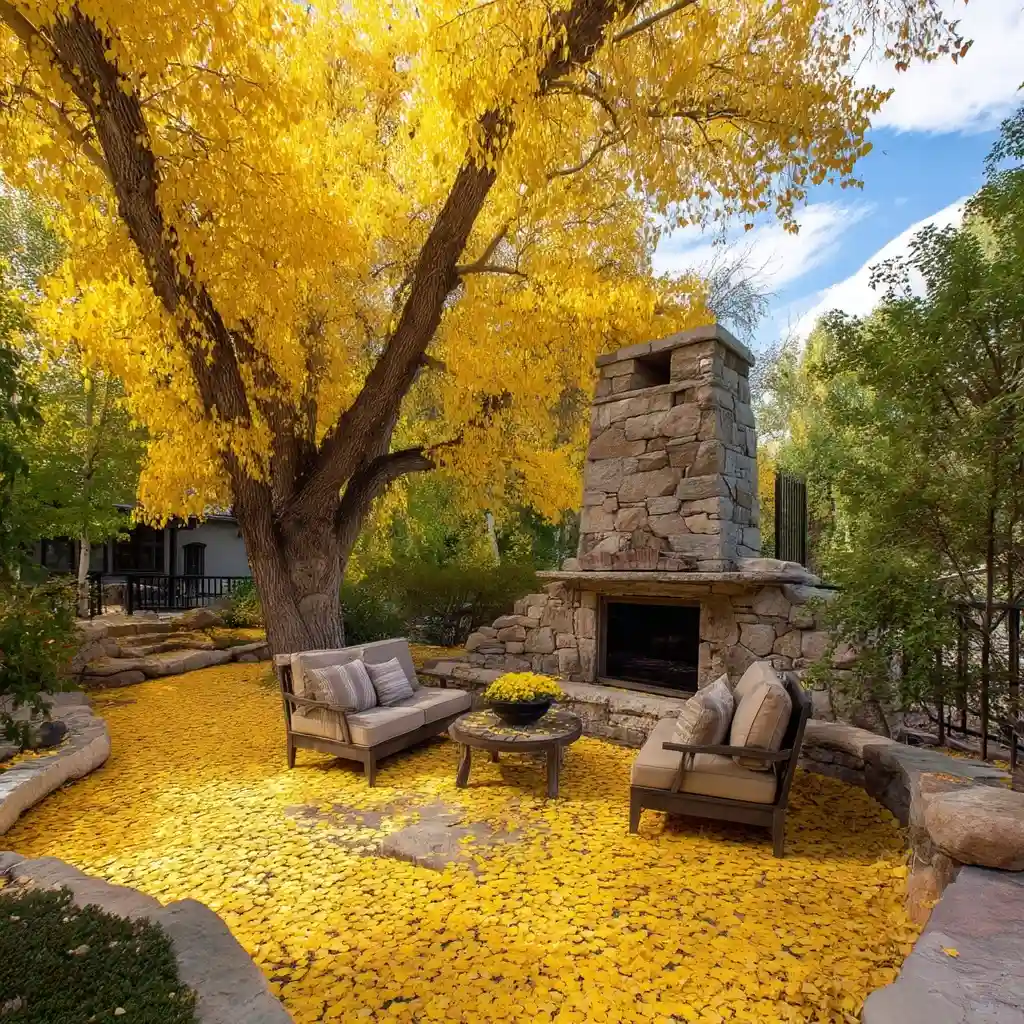
Placing autumn trees for landscaping near an outdoor fireplace can transform the space into a cozy seasonal retreat. The Fremont cottonwood (Populus fremontii), with its golden-yellow leaves that shimmer and tremble in the breeze, adds movement and warmth to the setting. As the leaves fall, they create a natural golden carpet around the seating area, enhancing the rustic charm. Pairing it with evergreens like cypress introduces contrast and ensures the space stays visually appealing even after the leaves drop. This combination invites longer evenings outdoors, where you can enjoy both the fire’s warmth and nature’s seasonal display.
13. Create a Raised Bed Around Your Trees
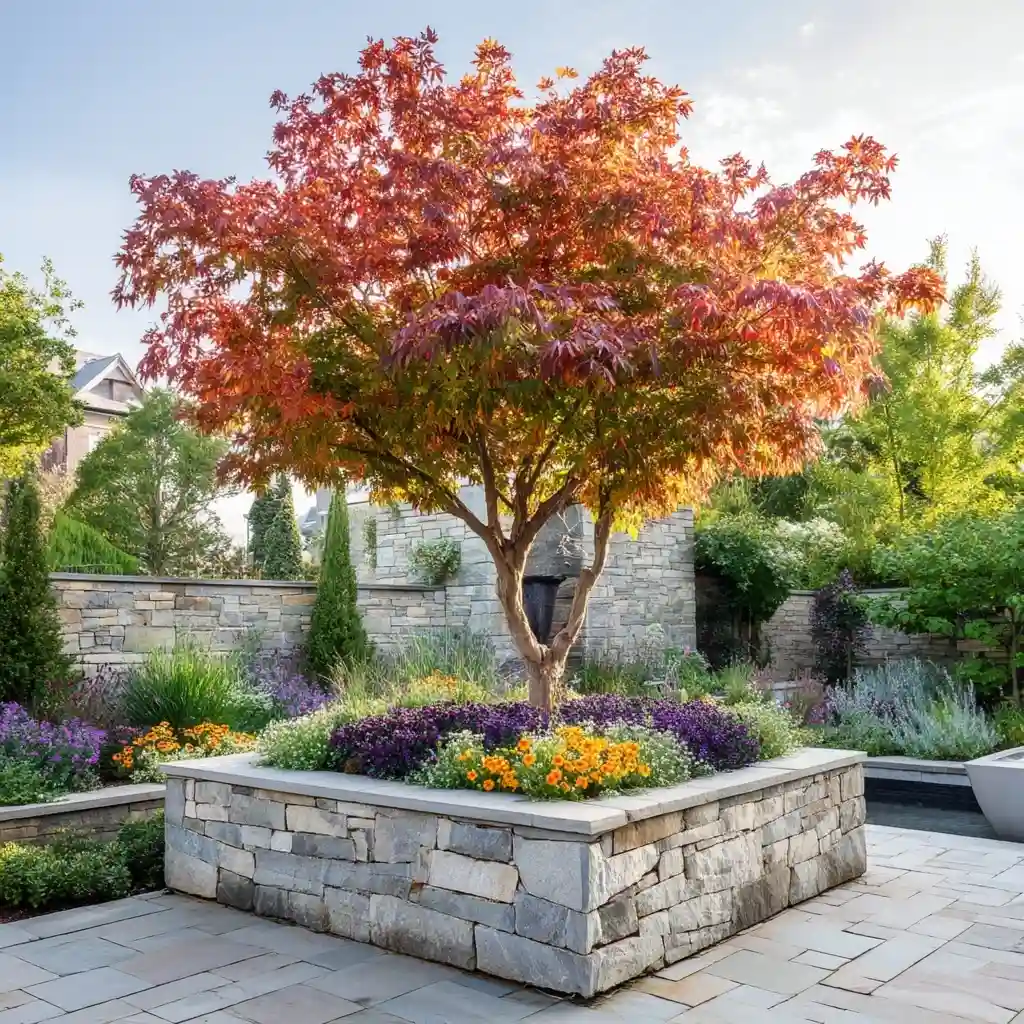
Enhancing autumn trees for landscaping with a raised bed can elevate both their appearance and their growing conditions. Building a stone or paver border around a maple or beech tree adds structure to the garden while helping retain soil moisture and reduce weeds. The raised bed can be filled with rich, well-draining soil and planted with complementary seasonal flowers or groundcovers for added texture and color. This setup not only frames the tree as a focal point but also makes maintenance easier, creating a polished, layered look that transitions beautifully from autumn into winter.
14. Keep it Low
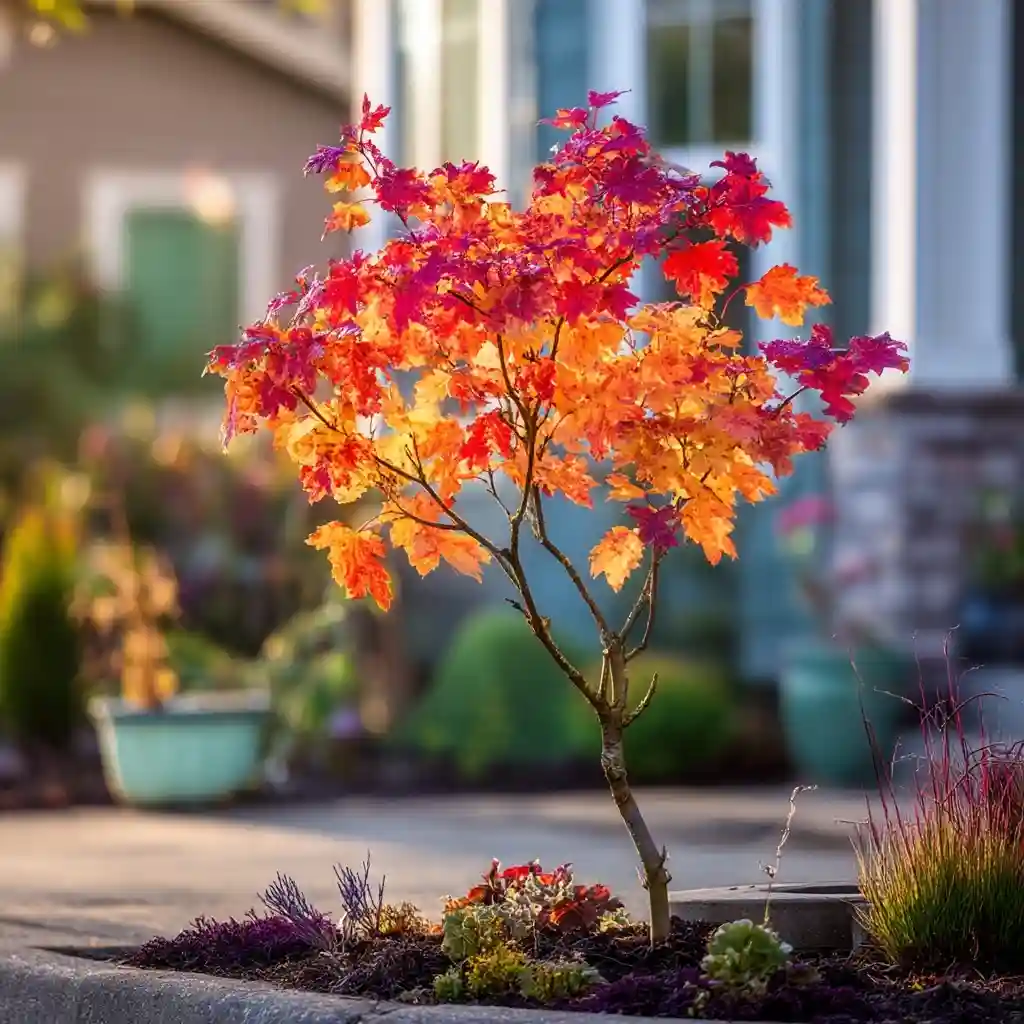
Not every autumn tree for landscaping needs to soar sky-high to make an impact. Smaller varieties, like compact sugar maples, bring vibrant color without overwhelming the space. Their mix of orange, yellow, and red foliage can create a stunning focal point in modest yards or near patios where large trees might feel overpowering. Low-growing trees also pair well with perennials, ornamental grasses, or stone features, allowing you to build layered interest at eye level. This approach is perfect for those who want seasonal drama without the long-term commitment of a towering canopy.
15. Complement Outdoor Natural Features
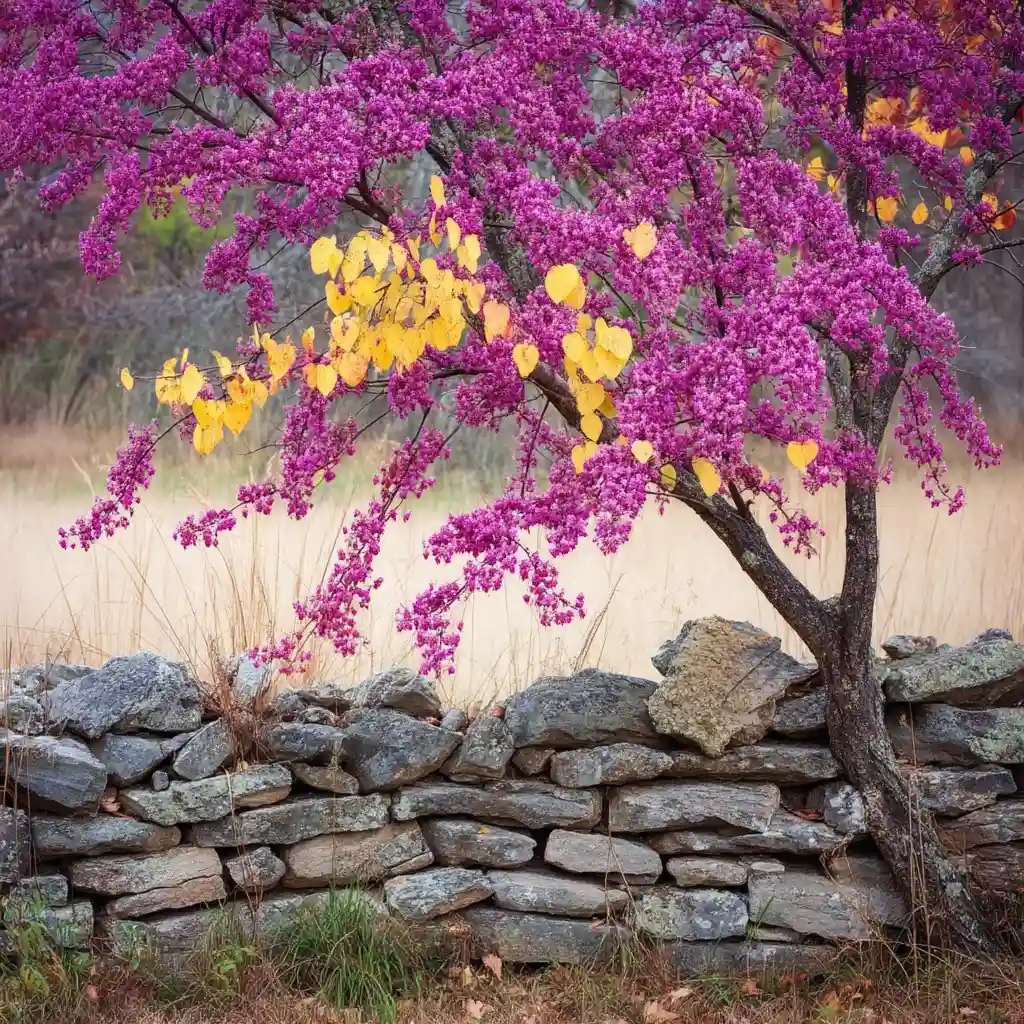
Placing autumn trees for landscaping near existing natural elements, such as stone walls, water features, or rock gardens, can create a seamless connection between planted and built environments. The Eastern redbud (Cercis canadensis) is a great choice—its heart-shaped leaves turn pale yellow in fall, and in spring, it bursts into pinkish-purple blooms. When positioned beside a rustic stone wall or along a natural slope, the tree’s seasonal colors soften hard surfaces and highlight the beauty of the surrounding landscape. This pairing feels organic, as though the tree has always belonged in that spot.
16. Add Some Greenery Color
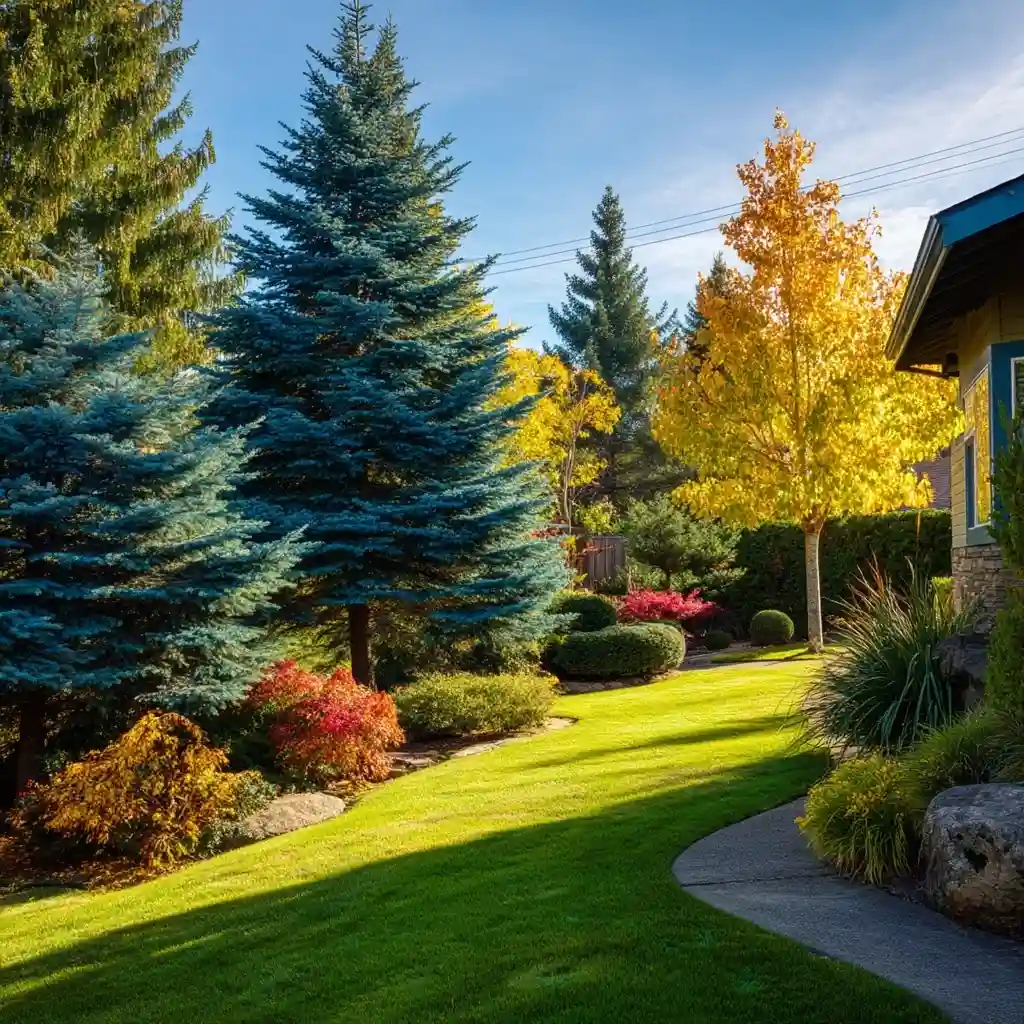
Including evergreens among your autumn trees for landscaping ensures your yard keeps its visual appeal after the deciduous leaves fall. Pine trees, for example, bring year-round green while offering food and shelter for wildlife. Planting them in fall gives their roots time to establish before winter, leading to a flush of healthy growth in spring. When paired with brightly colored maples or birches, evergreens create a balanced palette—soft greens against vivid reds and golds—that keeps the garden looking lively well past autumn. They also act as natural windbreaks, adding both beauty and function to your space.
17. Reinforce with Flowers
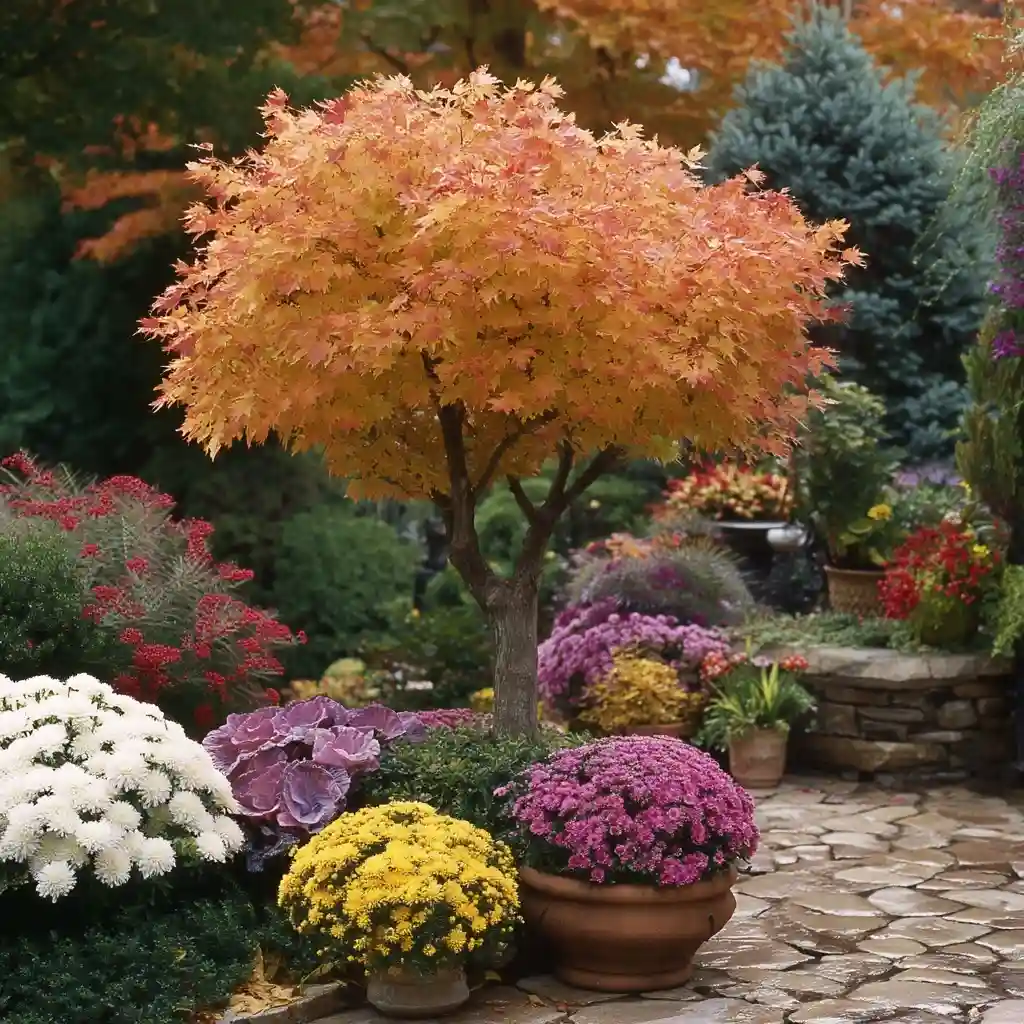
Pairing blooms with autumn trees for landscaping can create a layered, eye-catching seasonal display. Chrysanthemums in shades of yellow, red, and pink work beautifully alongside the rich foliage of maples or oaks. Adding ornamental cabbage or kale at the base provides texture and cold-weather resilience, while shrubs like pyracantha bring pops of orange from their berries. This mix of flowers, foliage, and fruit ensures the landscape remains vibrant from early fall into the cooler months. By blending plants with overlapping peak seasons, you can extend the garden’s beauty and create an intentional, well-composed look.
18. Maximize on Texture
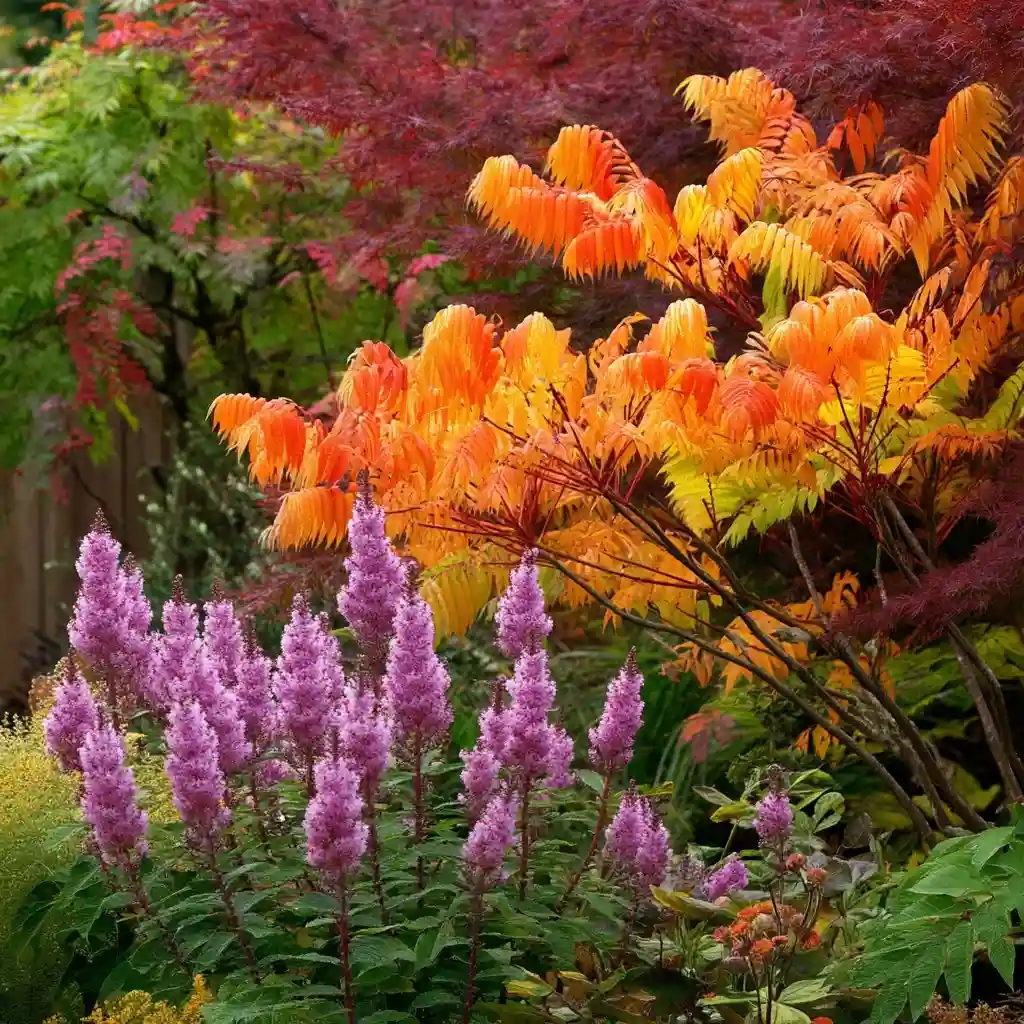
Mixing different shapes and surfaces within autumn trees for landscaping adds depth and richness to your yard. Staghorn sumac (Rhus typhina), with its feathery leaves and upright clusters of crimson seed heads, provides a bold, tactile presence. In fall, its foliage turns brilliant shades of orange and red, making it a standout choice for texture lovers. Pair it with the delicate, lacy leaves of a Japanese maple or the airy blooms of late-season perennials like verbena for contrast. This interplay of coarse and fine textures draws the eye, making your autumn garden feel more dynamic and thoughtfully designed.
ChatGPT said:
19. Hide the Facade
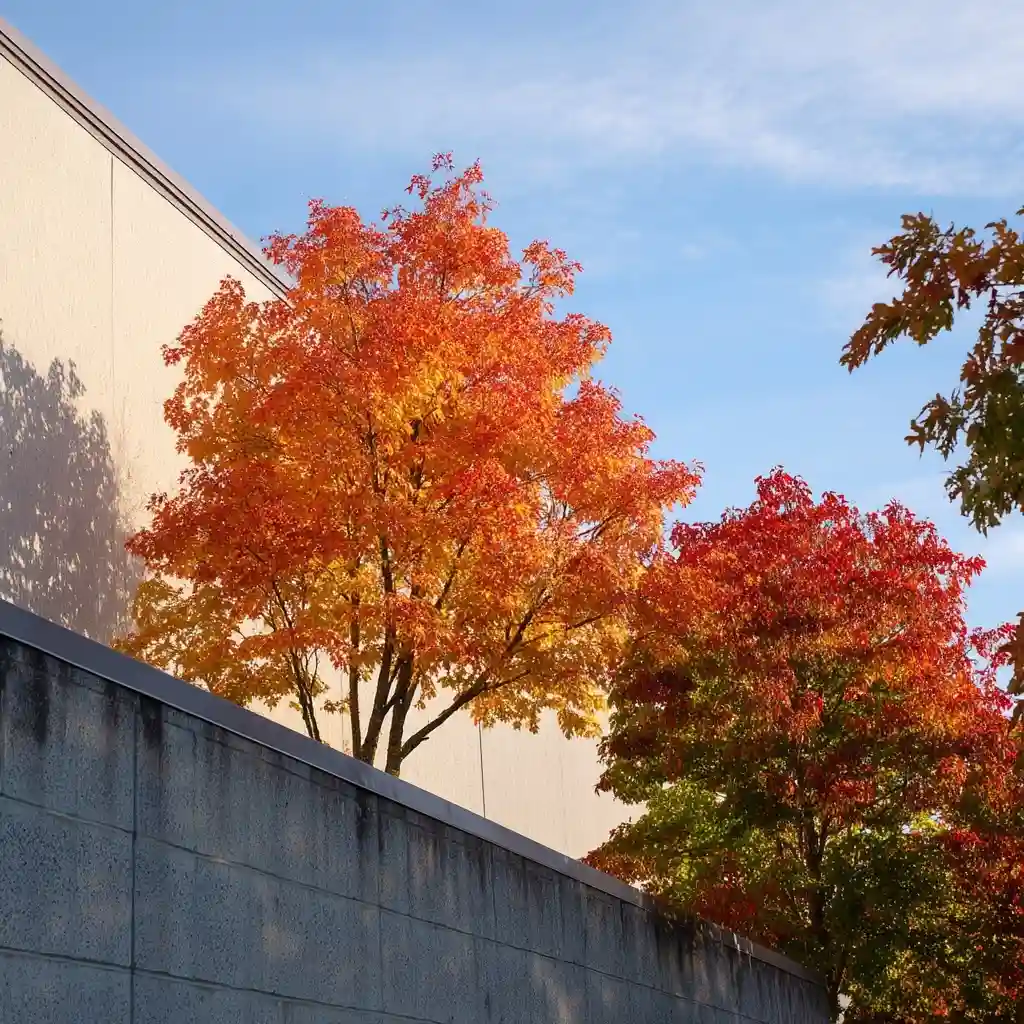
Using autumn trees for landscaping to soften or conceal parts of a building can improve curb appeal and create a more inviting atmosphere. Maples—particularly sugar and red varieties—are ideal for this purpose, as their vibrant yellow and red foliage draws attention away from plain or weathered facades. When planted strategically, they frame windows, mask blank walls, or add depth to otherwise flat exteriors. As the leaves change, the house becomes part of the seasonal scenery, blending harmoniously with the garden and making the property feel warmer and more welcoming.
20. Bring In Bushes
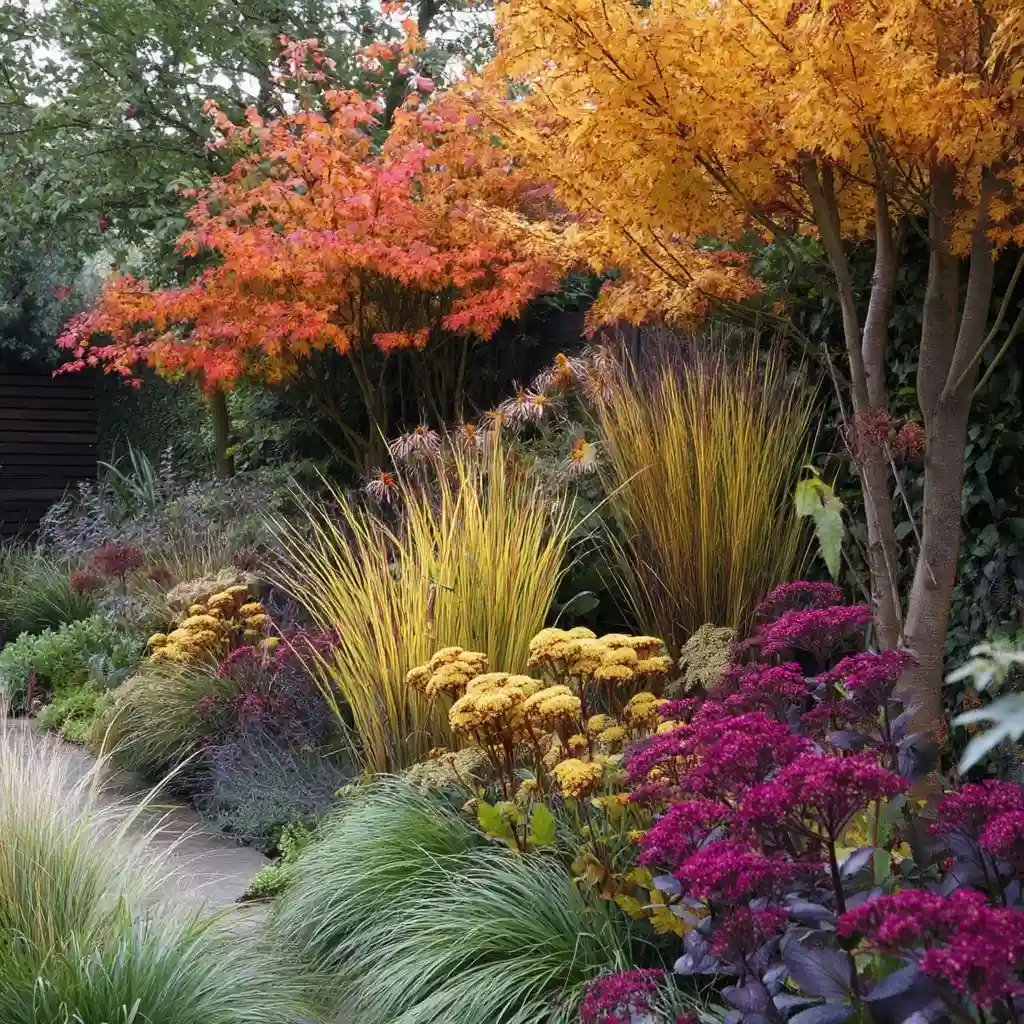
Complementing autumn trees for landscaping with ornamental bushes adds layers of color and texture that enhance the seasonal display. Golden Japanese forest grass can provide a bright, flowing base beneath fiery maples, while late-blooming perennials like rudbeckia offer rich seed heads for visual interest. Shrubs such as Sedum ‘Autumn Joy’ bring deep ruby tones that echo the warm hues of fall foliage. By mixing trees with low and mid-height plants, you create a tiered effect that feels full and balanced, ensuring the garden remains captivating from ground level all the way up to the canopy.
21. Try a Minimalist Approach
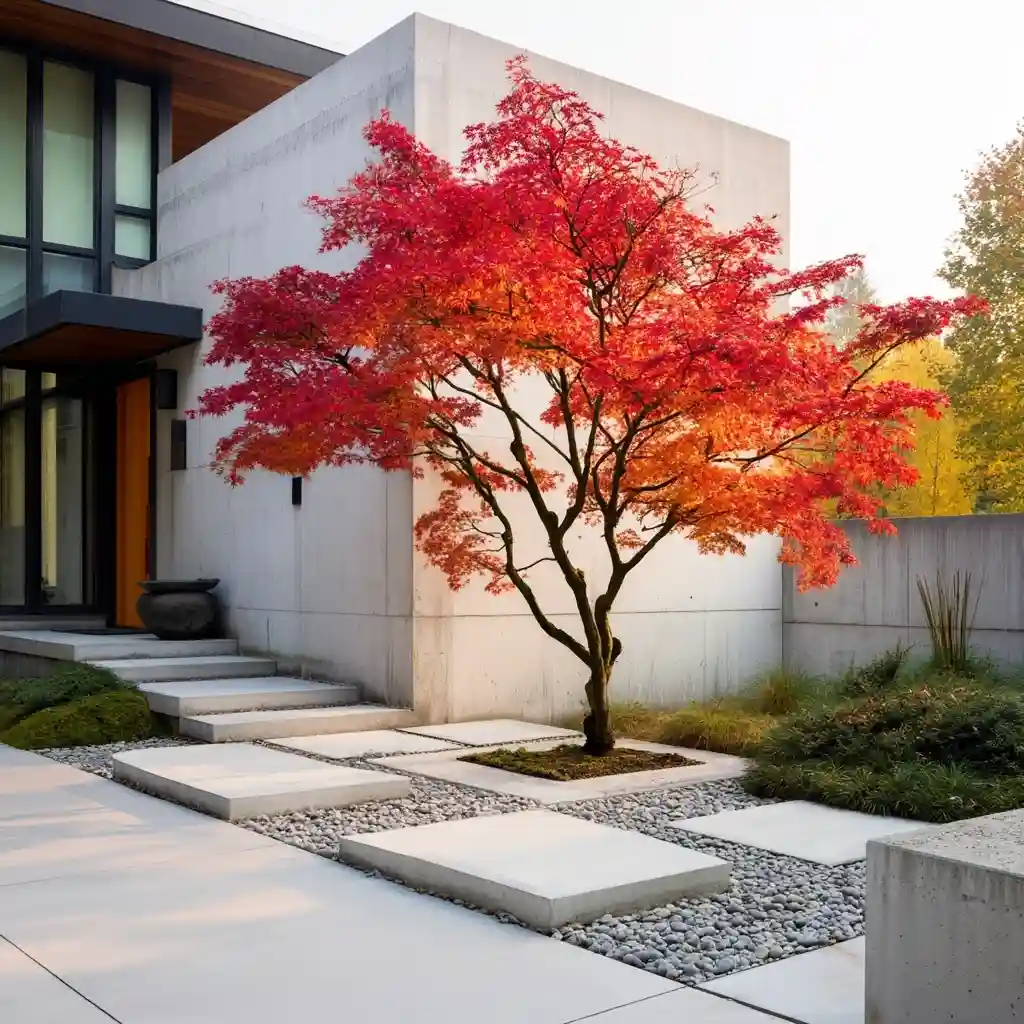
A single striking specimen can make autumn trees for landscaping feel intentional and refined. The Acer palmatum ‘Osakazuki,’ for example, dazzles in fall with vivid scarlet leaves that stand out against a simple backdrop. Limiting the variety of plants in the surrounding area allows the tree’s seasonal transformation to take center stage. This approach works especially well in modern or small gardens where clean lines and uncluttered spaces are key. By focusing on one tree with exceptional fall color, you create a bold yet elegant statement that requires minimal maintenance while delivering maximum visual impact.
22. Focus on a Small Area
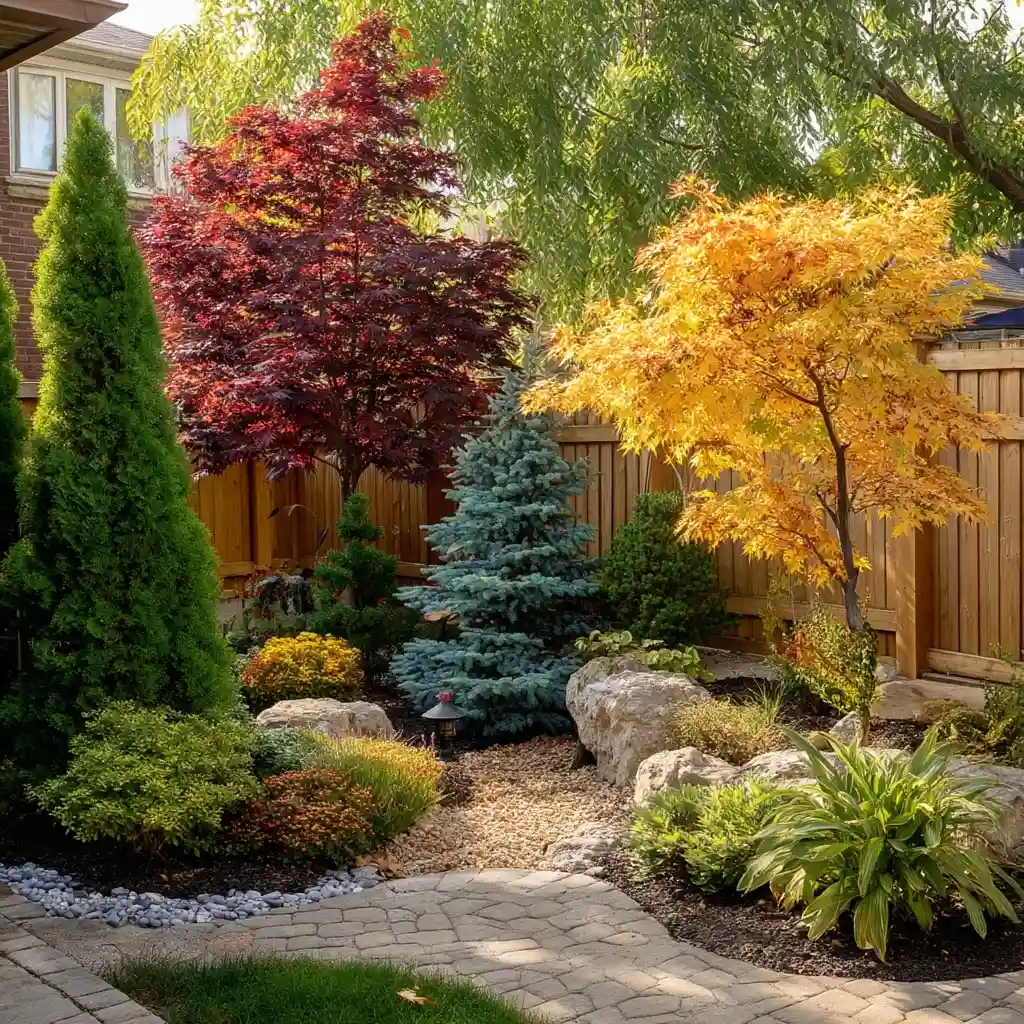
You don’t need a sprawling yard to showcase autumn trees for landscaping—a well-designed small section can have just as much impact. Pairing compact maples with evergreens in a corner garden or near an entryway can create a concentrated burst of seasonal color. In smaller spaces, every plant choice matters, so opt for trees with reliable fall foliage and complementary shapes. Layer in low shrubs or ornamental grasses to fill gaps without overwhelming the area. This focused design draws the eye to one vibrant spot, turning it into a highlight of the entire landscape.
23. Maintain the Tree Color
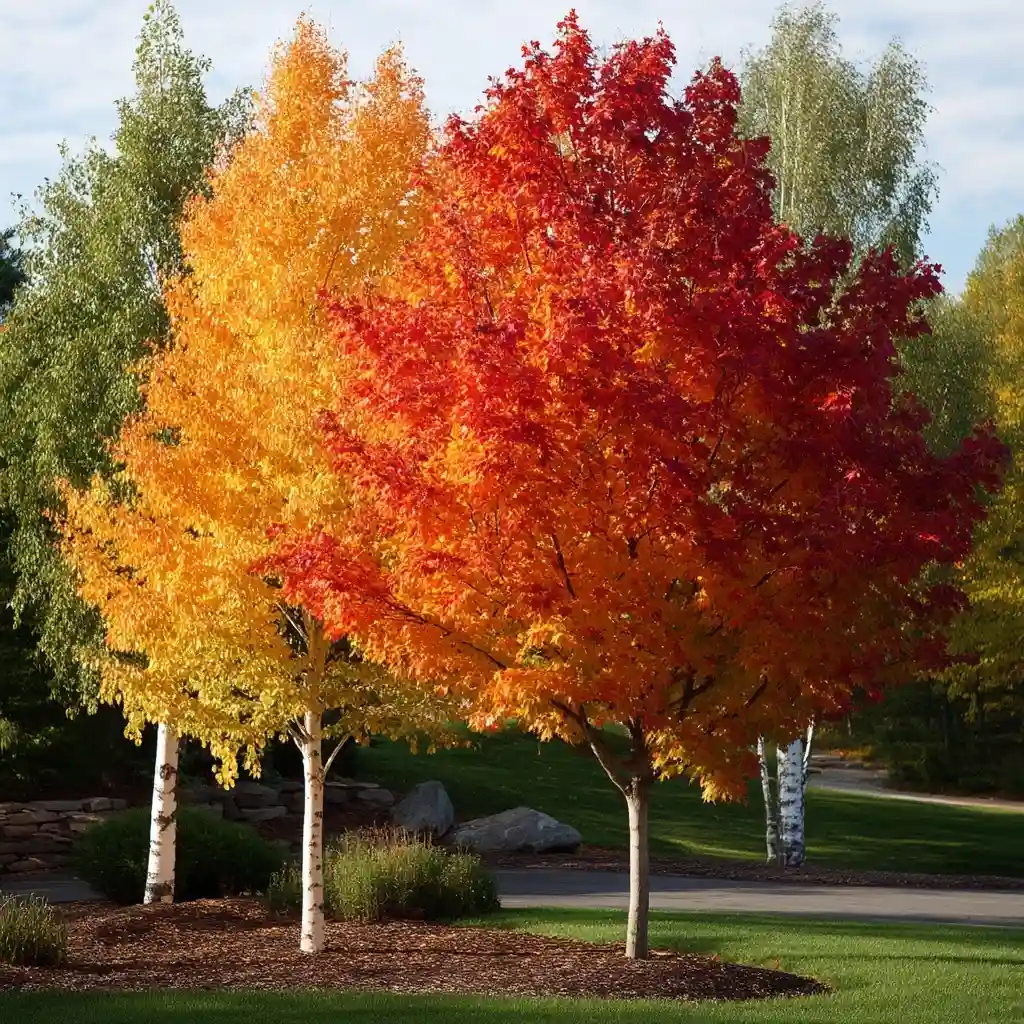
To keep autumn trees for landscaping looking vibrant year after year, it’s important to choose species known for consistent fall performance and care for them properly. Maples, oaks, and birches are dependable favorites, offering warm tones of yellow, orange, and red. Position them where they receive ample sunlight, as this helps intensify leaf color. Ensure regular watering during dry spells and apply mulch to protect roots and retain soil moisture. By maintaining healthy growing conditions, your trees will reward you each season with rich, glowing foliage that anchors your autumn landscape.
24. Utilize a Sloping Landscape
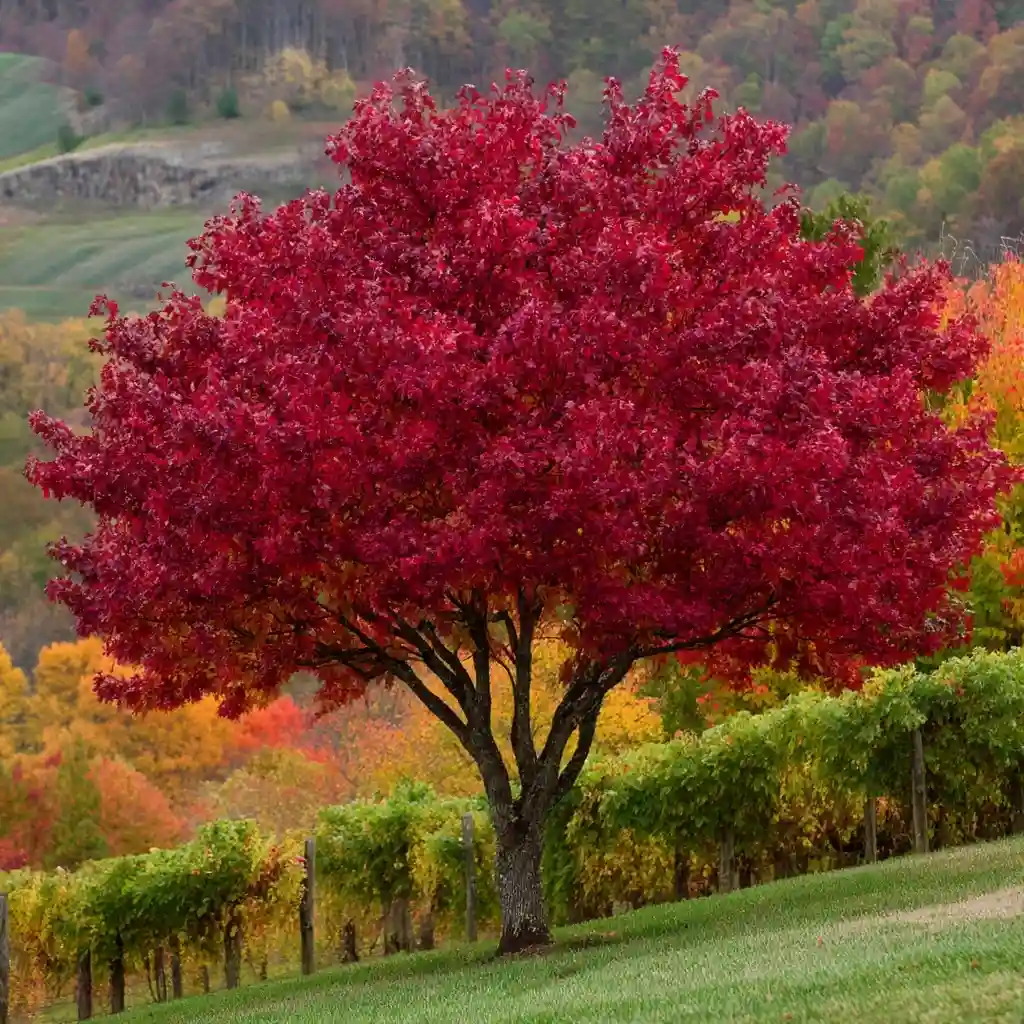
Planting autumn trees for landscaping on a slope can turn an otherwise challenging space into a showpiece. The Northern red oak (Quercus rubra) thrives in such conditions, offering brilliant russet-red foliage in fall while providing erosion control with its deep roots. Its large canopy creates a dramatic effect when viewed from below, especially against a backdrop of evergreens or open sky. Sloped plantings also allow for layered designs—shorter shrubs and perennials at the base, medium trees along the midsection, and taller specimens at the crest—giving the entire hillside a natural, flowing rhythm of autumn color.
25. Embellish the Entryway
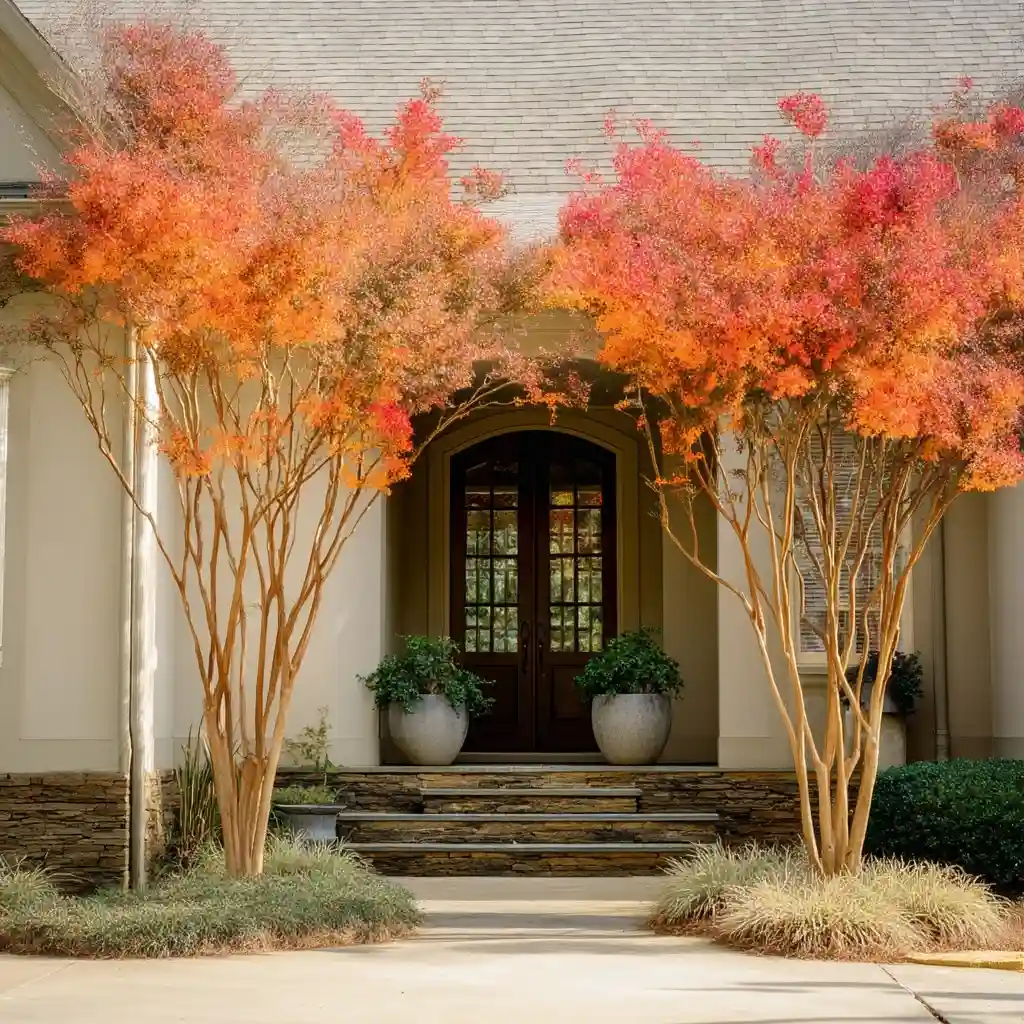
Framing your home’s entrance with autumn trees for landscaping instantly boosts curb appeal and creates a warm seasonal welcome. Crape myrtle (Lagerstroemia indica) is a standout choice, offering fiery orange or red foliage in fall along with attractive bark that peels to reveal smooth, patterned trunks. Planted in pairs on either side of a walkway or steps, these trees create a natural frame that guides visitors toward the front door. Their compact size makes them suitable for smaller entry spaces, while their vibrant autumn display ensures your home stands out during the season.
Conclusion
Incorporating autumn trees for landscaping transforms an ordinary yard into a seasonal masterpiece filled with warmth, texture, and vibrant color. Whether you choose towering maples, graceful Japanese maples, or smaller statement trees, each variety adds its own personality to your outdoor space. Pair them with complementary plants, consider your home’s architecture, and think about practical benefits like shade or wildlife support. With thoughtful planning and the right selection, your garden can capture the magic of fall year after year, making it a place you’ll enjoy in every season.
🌿 Love gardening inspiration? Follow me on Pinterest for bold plant ideas, tips, and seasonal color!
More Posts
